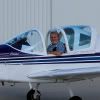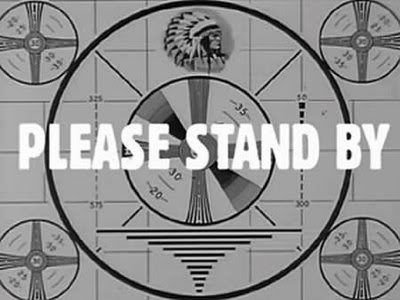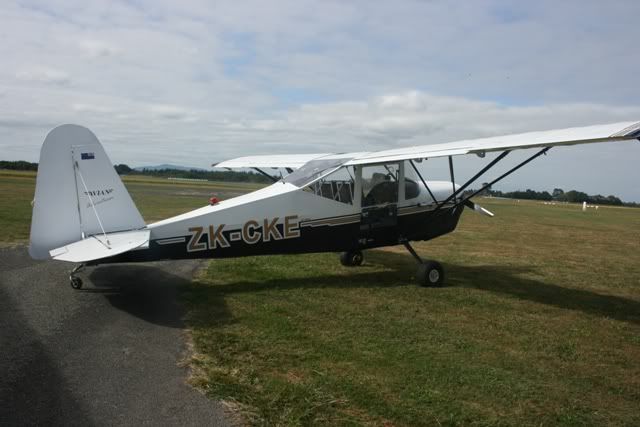|
|
Post by Peter Lewis on Aug 4, 2014 22:50:42 GMT 12
E W Percival was Australian by birth, and served with both the Australian Army and the RFC during WW1. After the end of that conflict he returned to Australia and established a commercial flying operation at Richmond Aerodrome. Following success in aircraft design competitions in the mid-1920s, he returned to England in 1929 and later established the Percival Aircraft Company. The first Percival aircraft to arrive in New Zealand was the D.3 Gull VI G-ADPR flown by Jean Batten. She had left England 0n the 5th October 1936 and flew via Darwin and Richmond across the Tasman sea to Auckland, arriving at Mangere on the 16th. The Gull was then shipped back to Australia where it was soon flown back to the UK and went on to further adventures. Jean Battan and G-ADPR arrive at Mangere 16/10/1936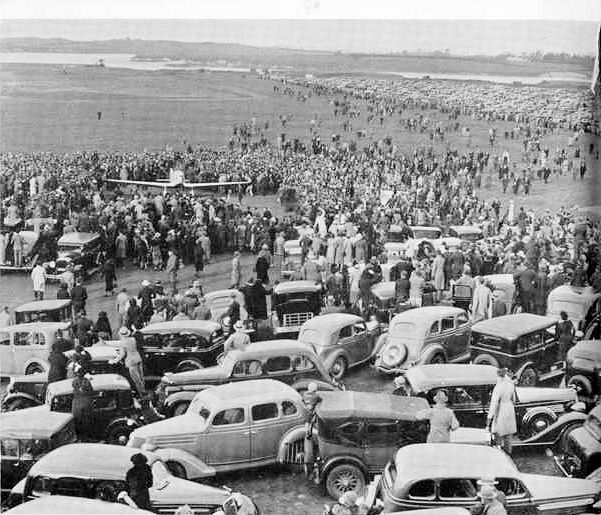 Photo: NZ Herald Photo: NZ HeraldThe second Gull to arrive followed a similar route, but arrived with much less publicity. This aircraft had been built in 1934 as a Gull Four c/n D.45 and registered as G-ACUL to the Percival Aircraft Company on the 18th June 1934 before sale to Lieut. Patrick Randolph, Dorset, on the 19th September. Randolph flew the Gull in a number of air races during his ownership.  Photo courtesy A J Jackson collection, fees paid Photo courtesy A J Jackson collection, fees paidJust over a year later, on 16th October 1936, the Gull was bought by L Ernle Clark who then had the aircraft modified to D.3 Gull Six standard at the factory. Leonard Ernle Clark came from a pioneering farming family based in the Cashmere district of Christchurch. Ernle went farming at Waikari and obtained his pilot’s licence at the Canterbury Aero Club, which he joined in 1934. After travelling by ship to the UK in mid-1936, he decided to fly the return journey and bought the Gull to do so. When the press became aware of his plans they dubbed him ‘the Flying Farmer’. He departed from Lympne airfield on the 26th October 1936 , landed at Omaka on the 15th November and then flew on to Wigram later the same day. I have it noted that the aircraft flew the journey from the UK carrying the registration ZK-AES, but the official date of registration was 5th January 1937 – probably the date when the NZ CofA was issued. Clark joined the New Zealand Territorial Air Force in September 1938 and went on to serve with the RAFVR and the RNZAF in WW2, being awarded the DFC. Ownership of the Gull passed to the Civil Aviation Department, Wellington on 12th August 1938 and it remained with them based at Rongotai until impressed as NZ572 on 12th November 1939. It was finally damaged beyond repair in a forced landing after engine failure on take-off at Hobsonville 18th July 1940, pilot Flt Lt E F Harvie. The remains were burnt. ZK-AES at rest at Omaka, 15th November 1936, at the conclusion of the Tasman sea crossing.
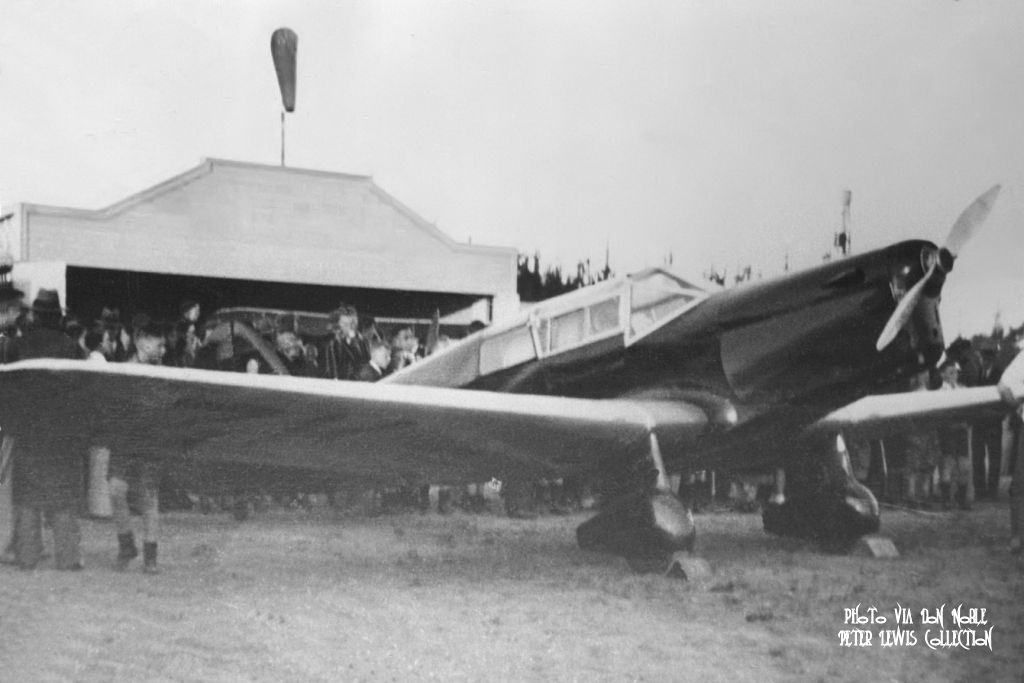 ZK-AES with Mr Clark?, at Wigram ZK-AES with Mr Clark?, at Wigram.
Note the long-range tank visible in the rear of the cabin.
No idea why the cougar/jaguar is on the rudder.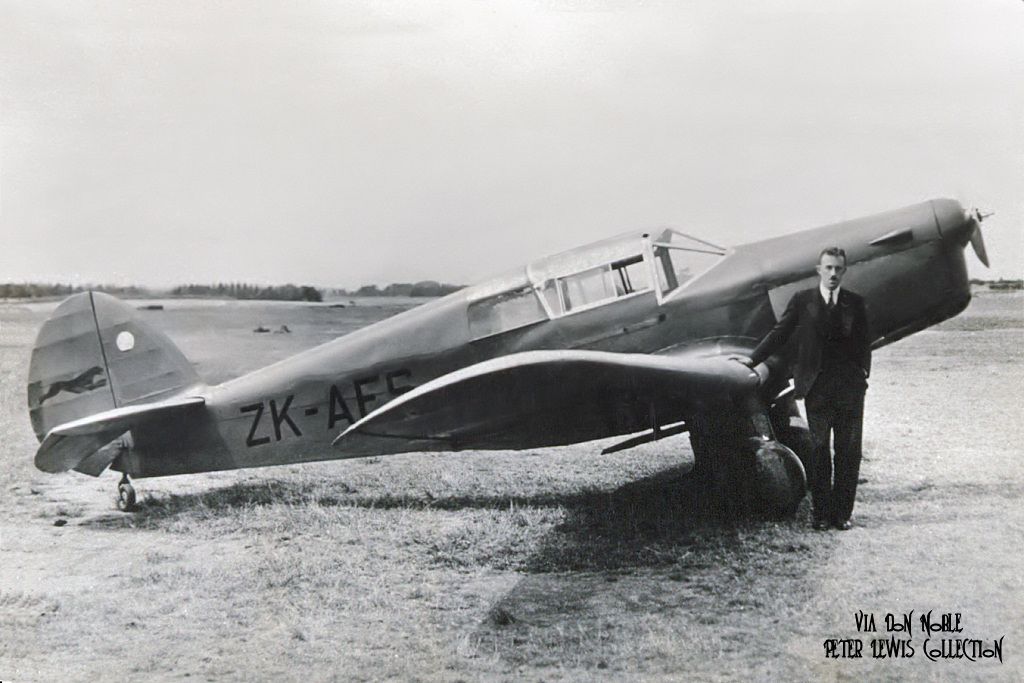 The feline has now been removed The feline has now been removed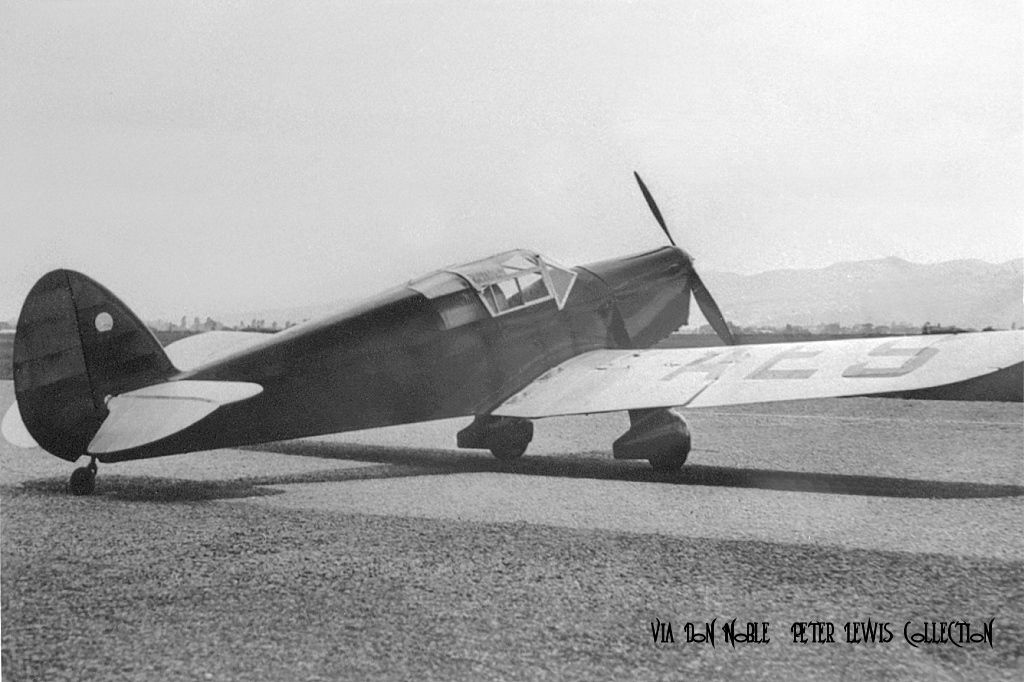 At Mangere, still in original colours. At Mangere, still in original colours.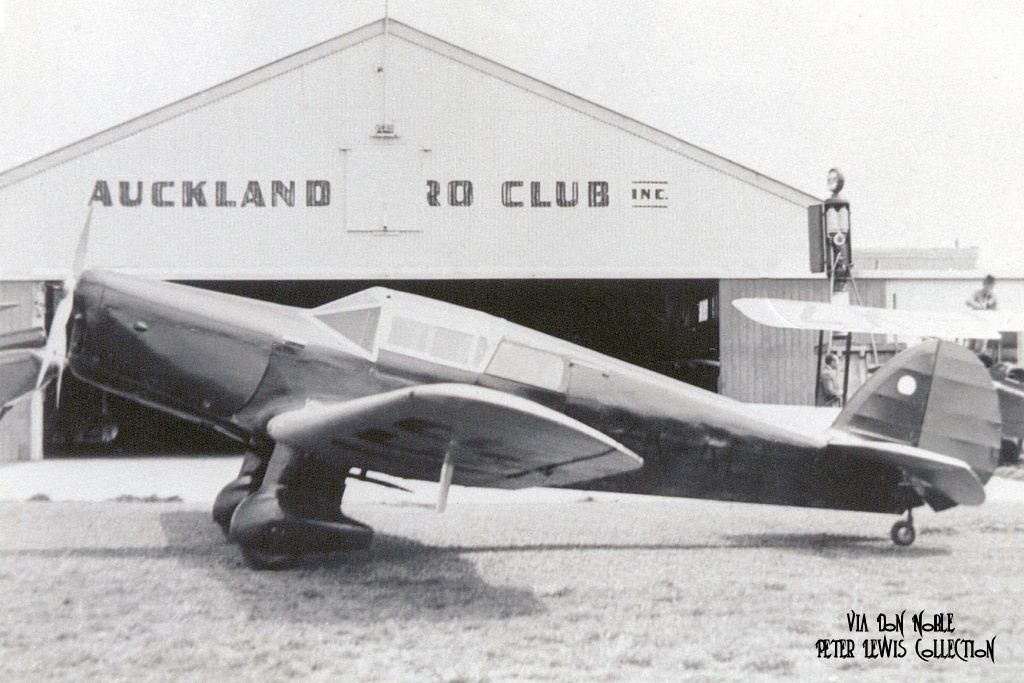 Repainted, at Rongotai under CAA ownership Repainted, at Rongotai under CAA ownership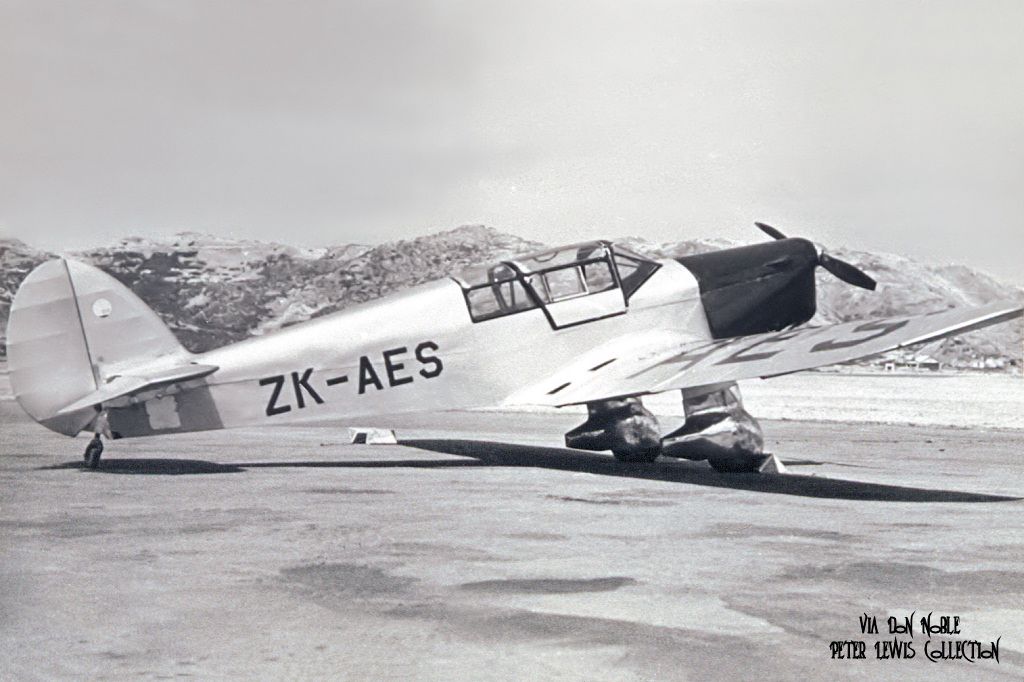 Note that I intend to cover all NZ's Percival aircraft in this thread. However, it will be slow going. I have been working all year on this project and still have a way to go - it is much more complex than I originally anticipated. If you have more information to add on each aircraft, please do so. If you can add further photos, please let me know by PM. Thanks for your patience. |
|
|
|
Post by Peter Lewis on Aug 5, 2014 16:34:26 GMT 12
During his time in the UK Clark also obtained the NZ agency for Percival aircraft. After the sale of ZK-AES he then imported the Percival K.1 Vega Gull c/n K.63 and registered this as ZK-AKV on 10th August 1937. The Vega Gull was an update of the original three-seat Gull, and carried four people at almost the same speed as the Gull Six. The Wellington Aero Club were looking to expand their charter/air taxi operations, so bought the Vega in February 1938. They operated this aircraft, apparently without incident, from Rongotai until it was impressed into the RNZAF as NZ571 on 15th September 1939. The classic portrait shot of ZK-AFI at Rongotai Pre-flighting the Vega Gull at Rongotai while the waiting passengers and their friends look on. Pre-flighting the Vega Gull at Rongotai while the waiting passengers and their friends look on.
The Wellington club's Hawk Major ZK-AFK in the background ZK-AFI in flight ZK-AFI in flight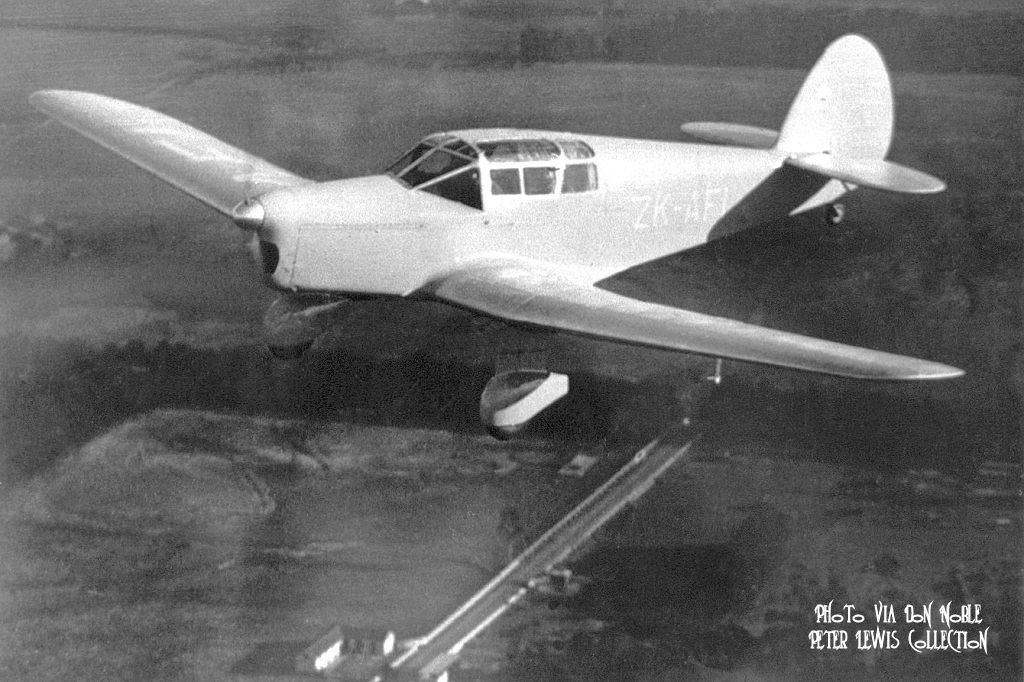 |
|
|
|
Post by hairy on Aug 5, 2014 20:36:40 GMT 12
Bring it on Peter, I have being waiting for this one and was starting to wonder when it would happen.  I am looking forward to the rest of the series.  |
|
|
|
Post by Peter Lewis on Aug 6, 2014 21:32:54 GMT 12
After service with the RNZAF in the communications role, the Vega was civilianized in July 1946 and was restored to the register with the new registration ZK-AKV returning to the Wellington Aero Club on 13th August. After a further five years service it was eventually replaced by a Miles Gemini. The next owner was the Hauraki Aero Club at Thames, who took ownership on 16th April 1951, followed by John Colin Worthington of Matamata & Walter E Christopherson 28th October 1952. They formed Midland Air Services Ltd. and based themselves at Te Kuiti. The Vega was operated under that trading name from December 1952 and registered to the company on 28th September 1953. It was mainly used for aerial photography and charter work, with a camera hatch in the fuselage floor. In late 1954 the Midland company was sold to a group of investors who were establishing an air service for the Coromandel area, and ZK-AKV was included in the sale. However, the aircraft needed a major overhaul which took from January 1955 to late 1956. After the work was completed, the Vega acted as a backup aircraft to Cessna 180 ZK-BJU for Midland’s Coromandel operations until sold. A Rex Boulton & A H Jones, New Plymouth were the owners from 9th October 1957, and the aircraft was damaged in an incident at Ohura, near Taumaranui, on 29th March 1958 and was not repaired by them. Ownership passed to the New Plymouth Aero Club on 6th September 1961 who had the Vega back in the air again by late November. ZK-AKV finally moved south, to Russell J Howie, Benmore in December 1962. Unfortunately, housed in an open-fronted hangar near Otematata, the Vega was damaged by cattle in the paddock in February 1963 and subsequently condemned by CAA. The registration was cancelled on 15th October 1964 and the aircraft broken up at Otematata. Some parts are said to have gone to John Geary of Auckland. Vega Gull ZK-AKV in post-war Wellington Aero Club livery at Rongotai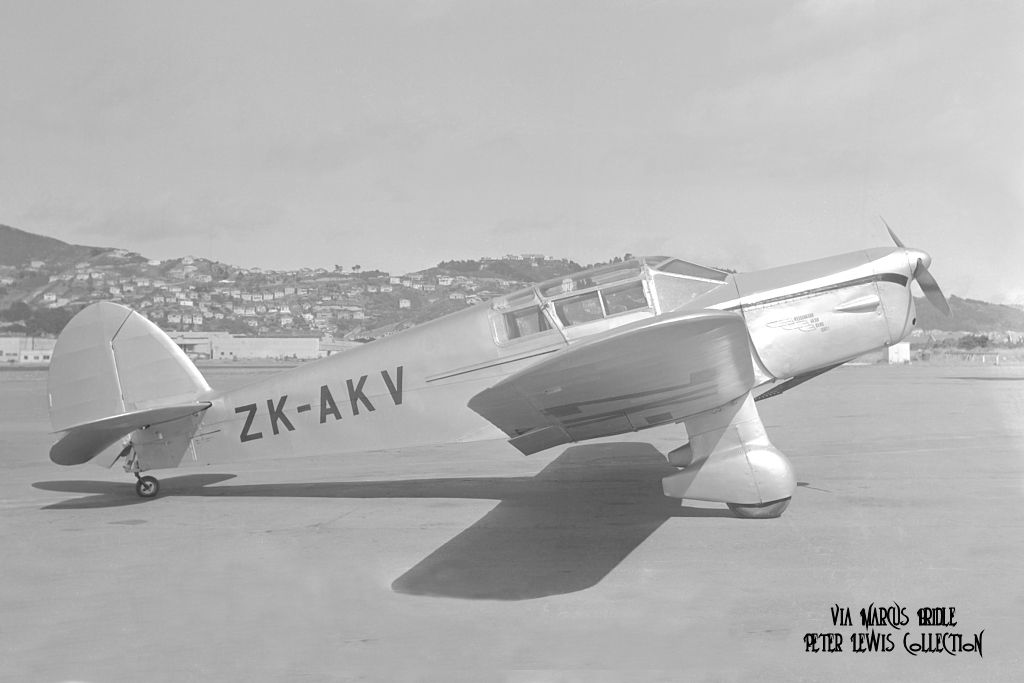 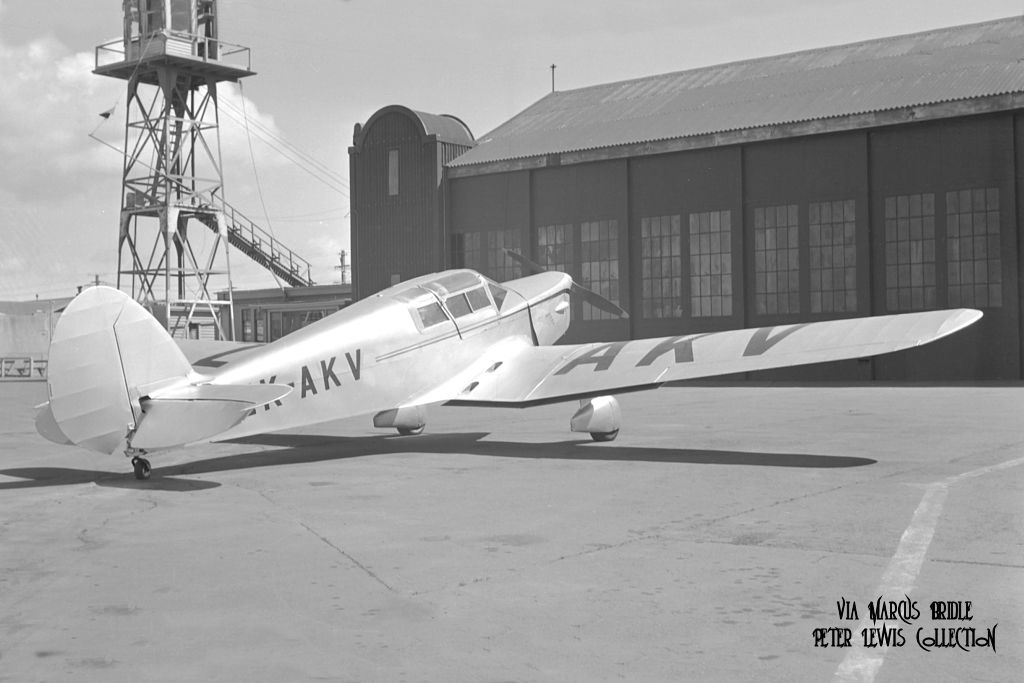 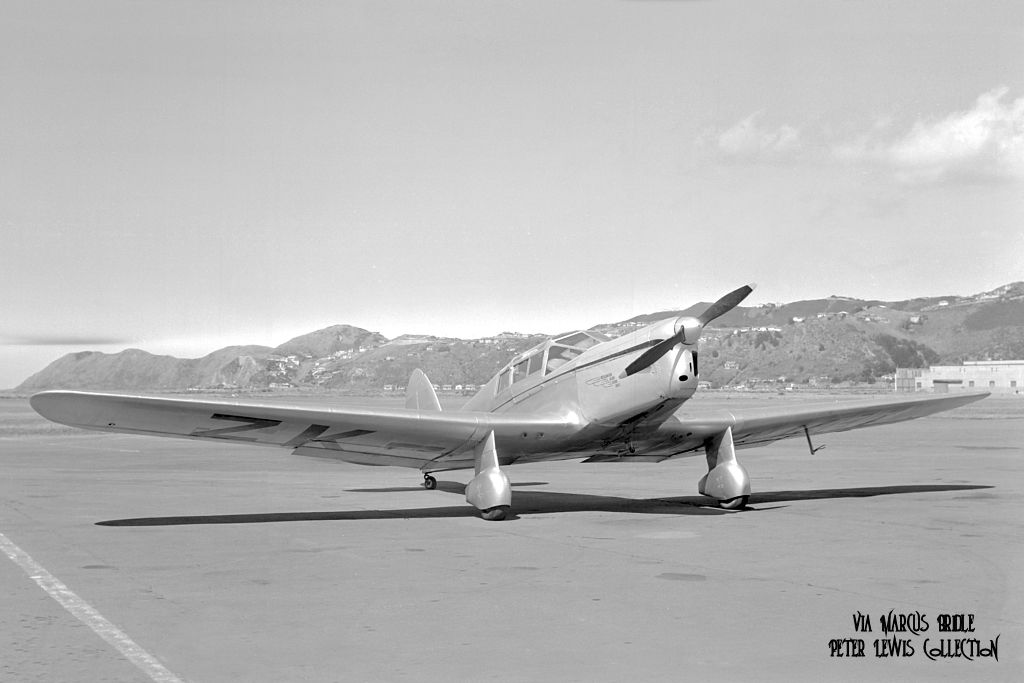 At Rongotai with its younger brother, Clark's Proctor 5 ZK-AQZ At Rongotai with its younger brother, Clark's Proctor 5 ZK-AQZ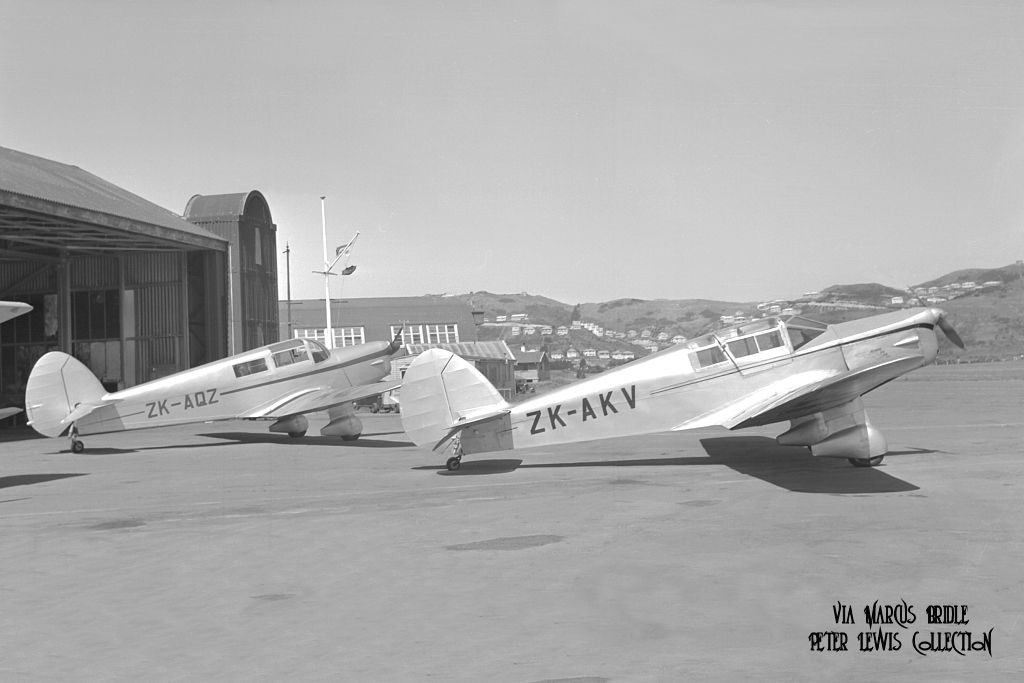 . . .and othe other members of the Wellington aero club fleet come out to sit in the sun . . .and othe other members of the Wellington aero club fleet come out to sit in the sun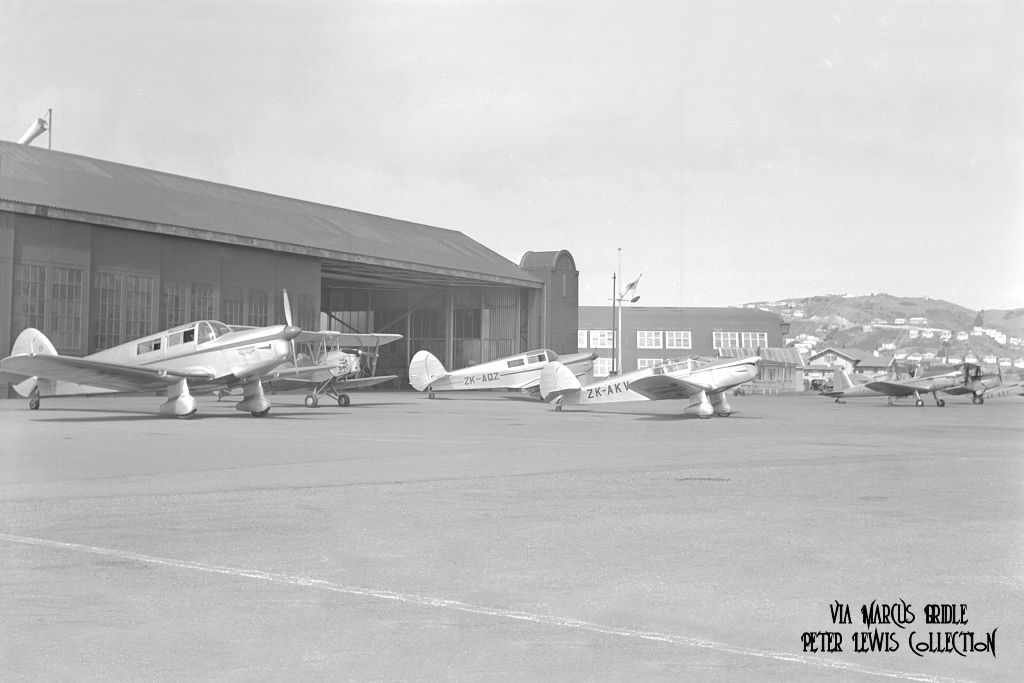 A visit to Mangere A visit to Mangere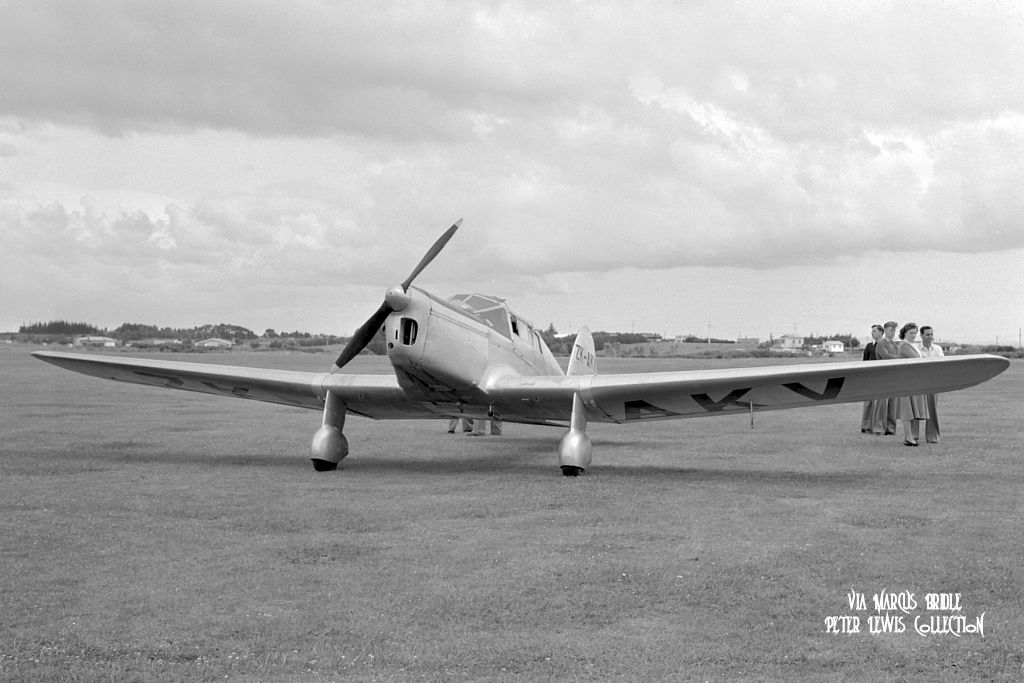 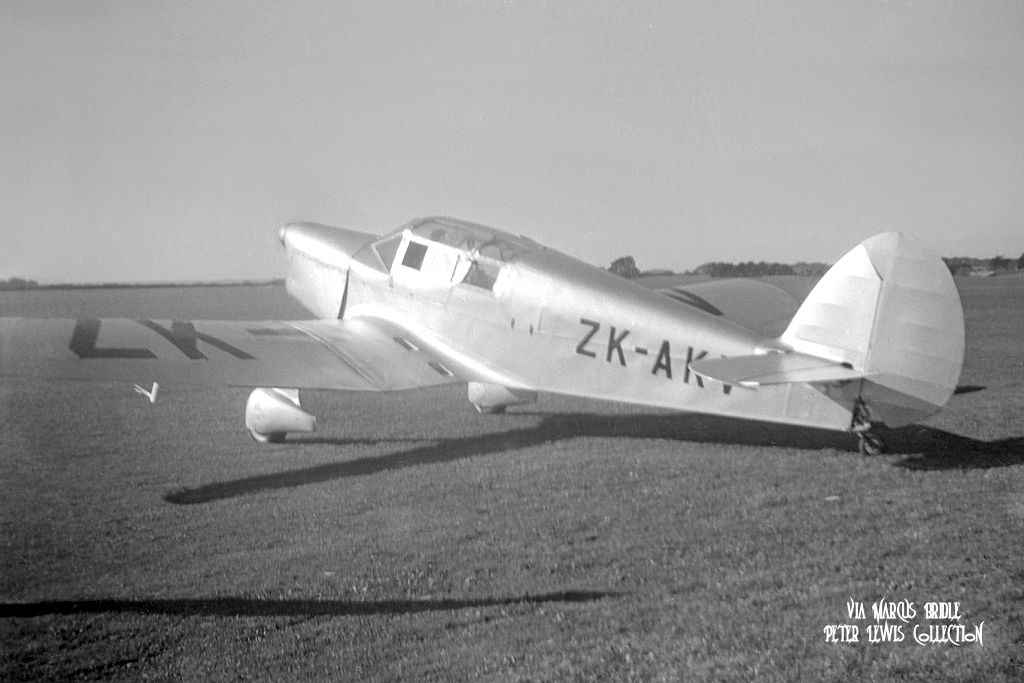 ZK-AKV while with the Hauraki club, visiting Mangere ZK-AKV while with the Hauraki club, visiting Mangere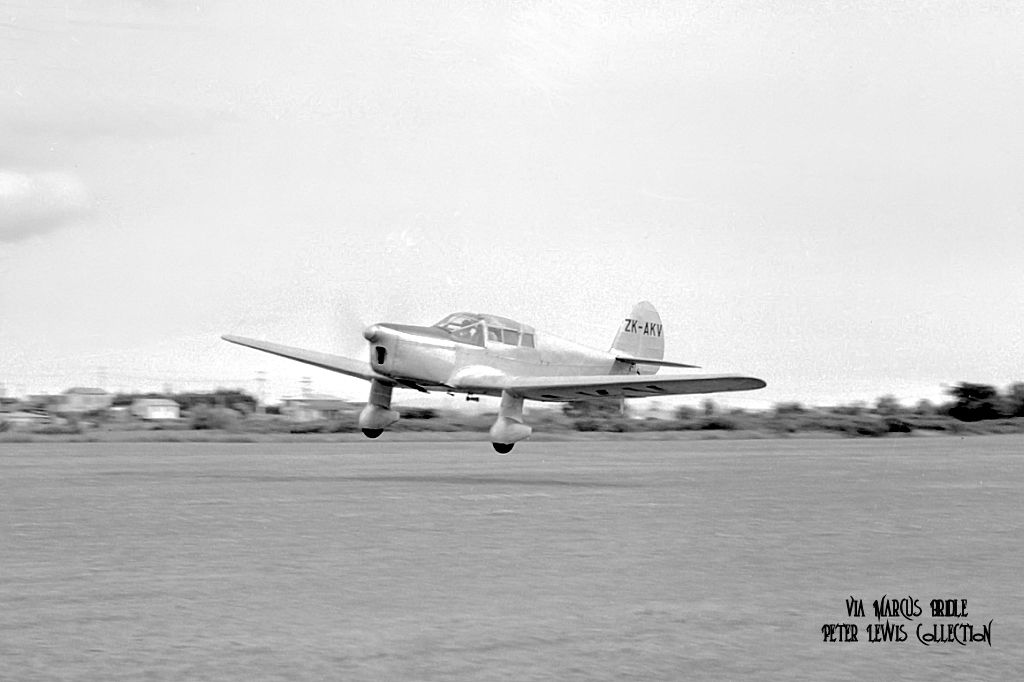  At Te Kuiti, while with Midland At Te Kuiti, while with Midland. Note the Harvards in the background.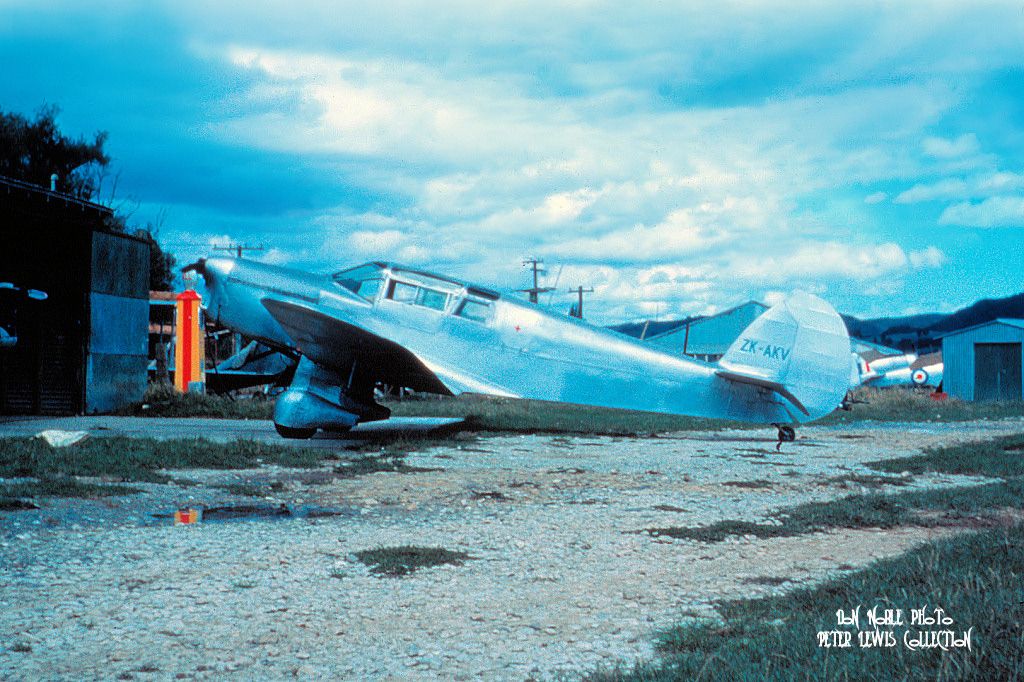 Starting to look a bit weather worn Starting to look a bit weather worn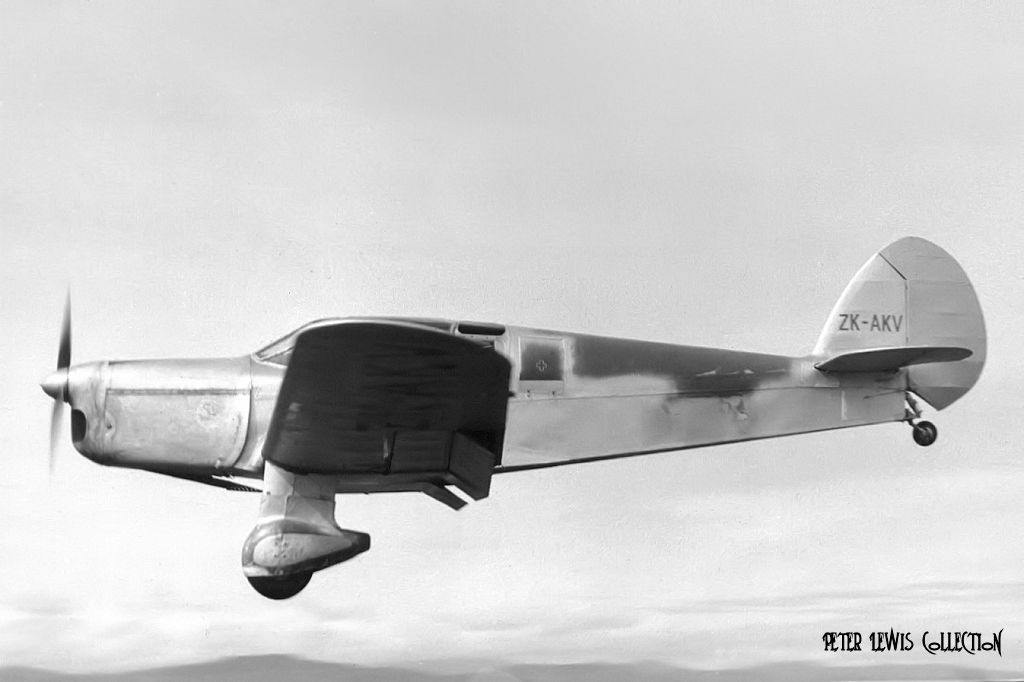 Final colours, as part of the New Plymouth fleet. Final colours, as part of the New Plymouth fleet.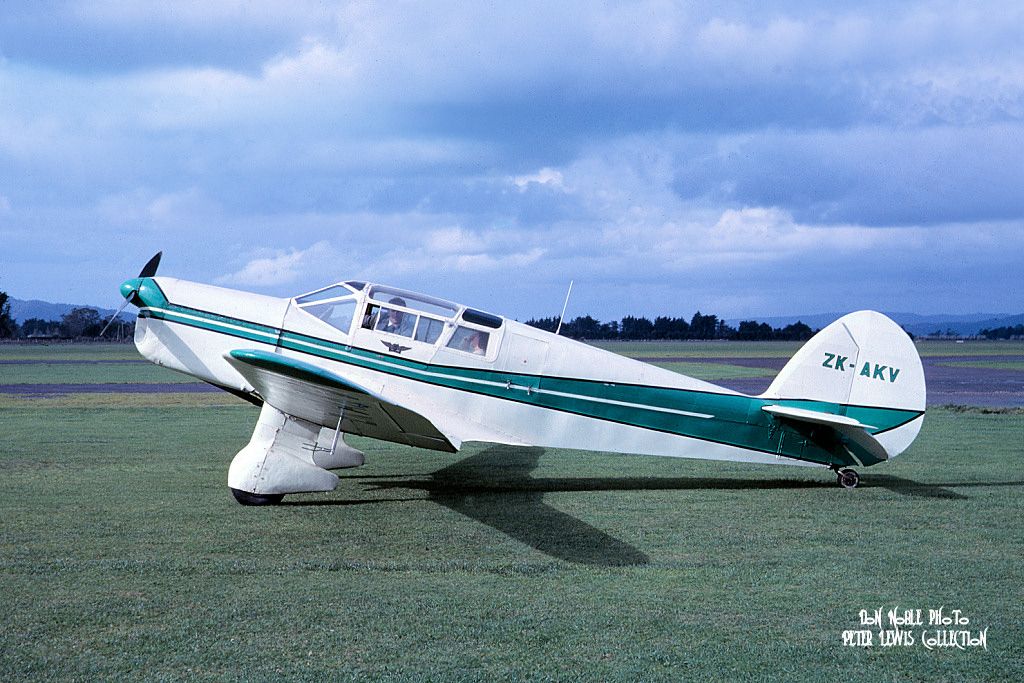 Query: Anyone know the details of the 29th March 1958 incident at Ohura? |
|
|
|
Post by Dave Homewood on Aug 6, 2014 21:41:21 GMT 12
Great thread Peter. And great to see some coloured photos too.
|
|
|
|
Post by Bruce on Aug 6, 2014 23:02:06 GMT 12
That white and green New Plymouth Scheme is very attractive!
|
|
|
|
Post by Peter Lewis on Aug 7, 2014 16:54:19 GMT 12
The Vega Gull caught the interest of the British Air Ministry, and they ordered a military version which was christened the Percival Proctor. The Proctor I was basically a Vega Gull with seating reduced from four to three intended for the communication role. The Proctor II and III were radio trainers without the dual control. One Proctor III (or Proctor 3 in postwar nomenclature) c/n H.43 carrying the RAF serial R7538 was shipped to New Zealand in late 1944 for NZ Government use. This aircraft had been built by F. Hills and Sons at Manchester, and was most likely a brand new aircraft. The Proctor was shipped to NZ aboard SS Empire Grace arriving 21Dec1944. After assembly by RNZAF workshops at Hobsonville it was first flown there on 26Jan1945 and registered to the Public Works department, Wellington, as ZK-AHV on the 30th. Based at Rongotai, this Proctor was used by the PWD to service their construction sites throughout the country. It crashed in the Glebe Valley, near Lake Monowai, Southland, while on a supply drop sorte 24Jan1947. A RNZAF Hudson from Wigram located the wreckage about 140 miles west of Taieri airfield. The only report I can find on the crash indicate that there were no fatalities, but when I look at the photos of the crash site (see below) I find this difficult to believe. Registration ZK-AHV was cancelled on 28Apr1947. PWD Proctor ZK-AHV at Rongotai, May 1945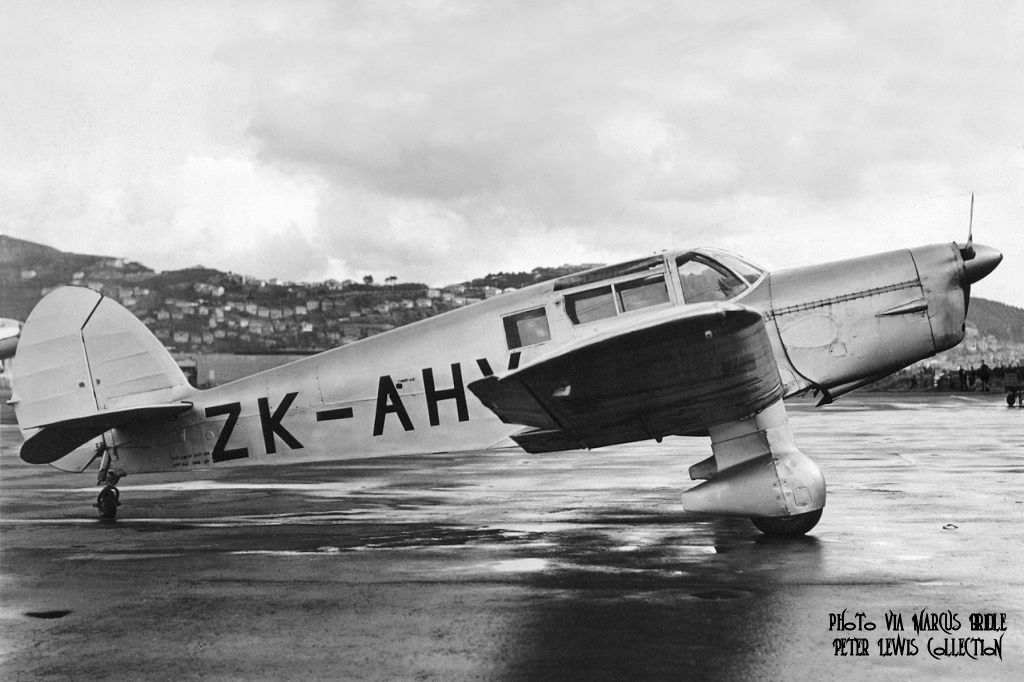  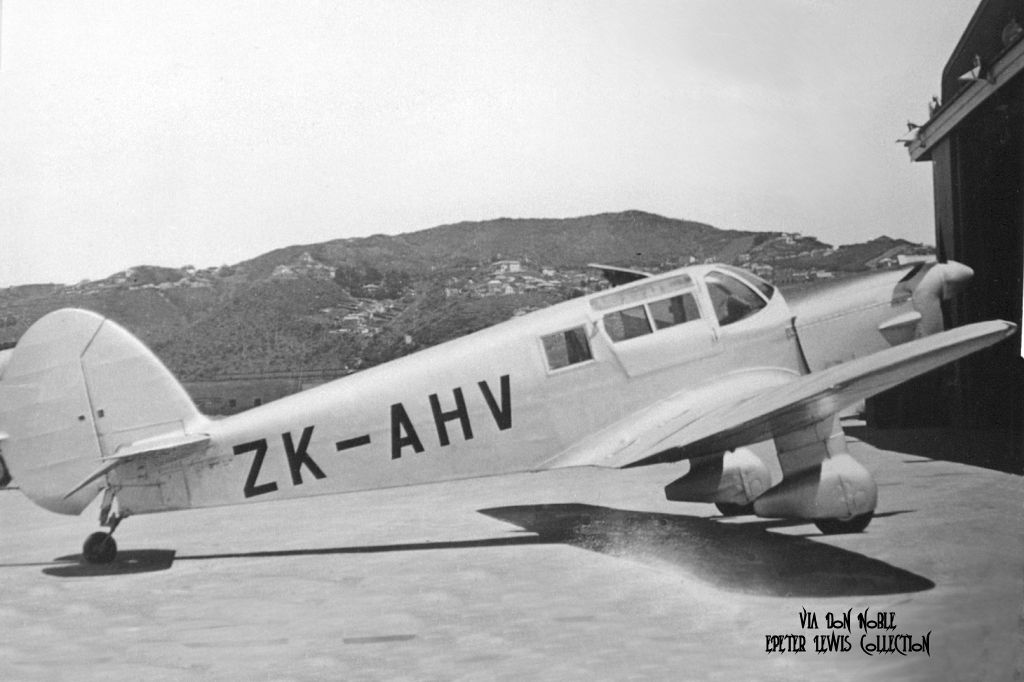 This print is said to be of ZK-AHV under assembly at DHNZ Rongotai. This print is said to be of ZK-AHV under assembly at DHNZ Rongotai.
As the assemby was actually at Hobsonville, presumably ZK-AHV was rebuilt at DHNZ some time during it's short life. Note the top wing of DH89B ZK-AKY, which would date the photo to Aug/Sep 1946. ZK-AHV at Taieri. Seems to be spruce-up day at the aero club. ZK-AHV at Taieri. Seems to be spruce-up day at the aero club.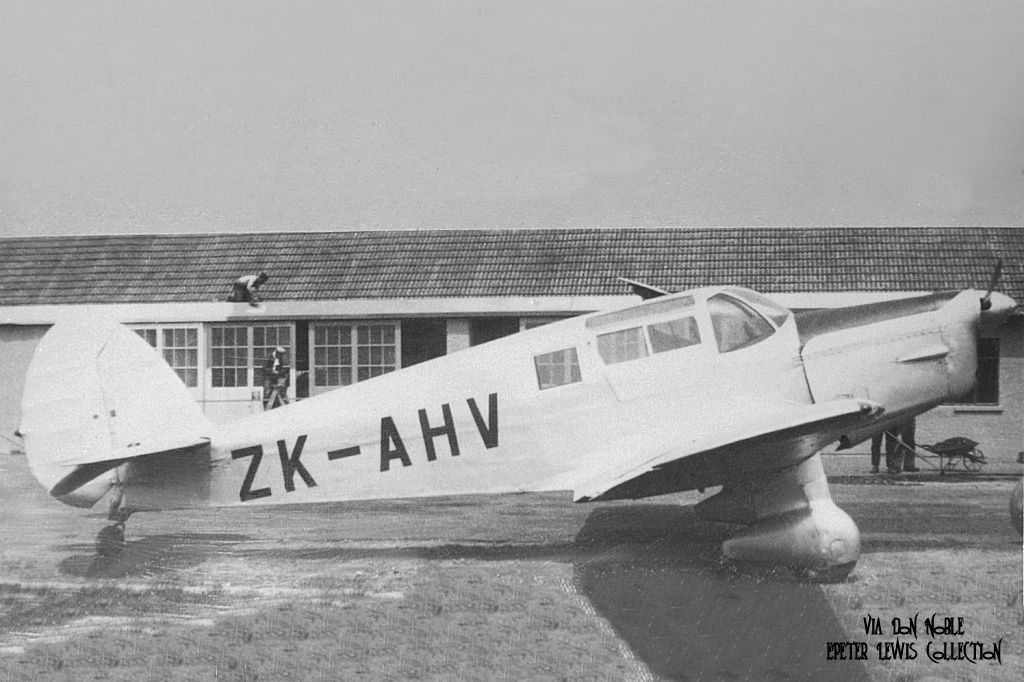 The crash site in the Glebe Valley. Looks to be quite an impact. The crash site in the Glebe Valley. Looks to be quite an impact.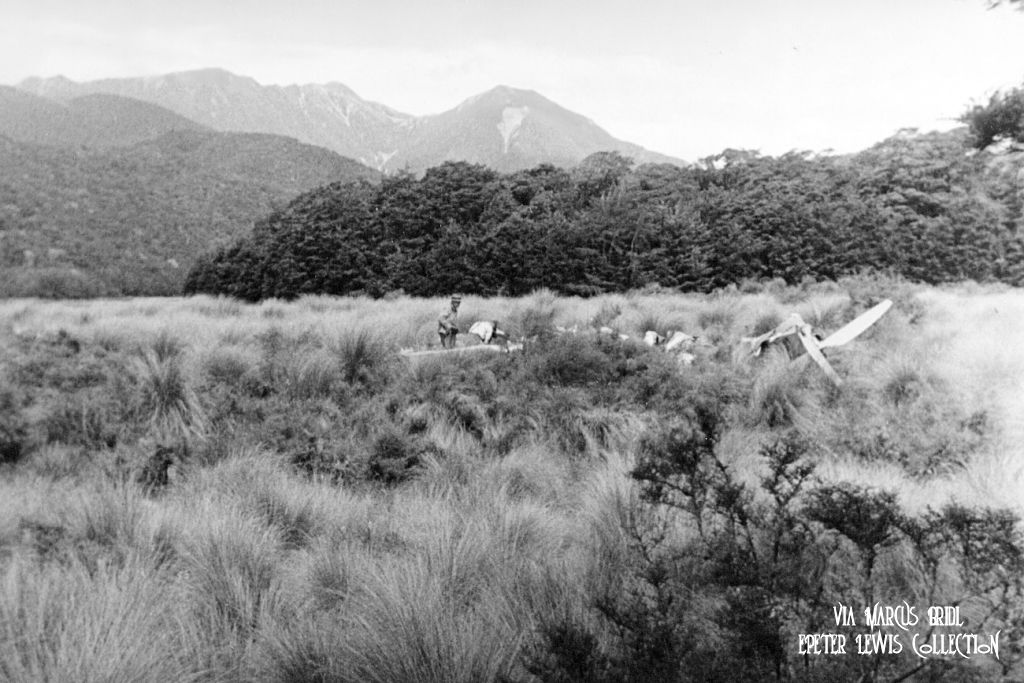 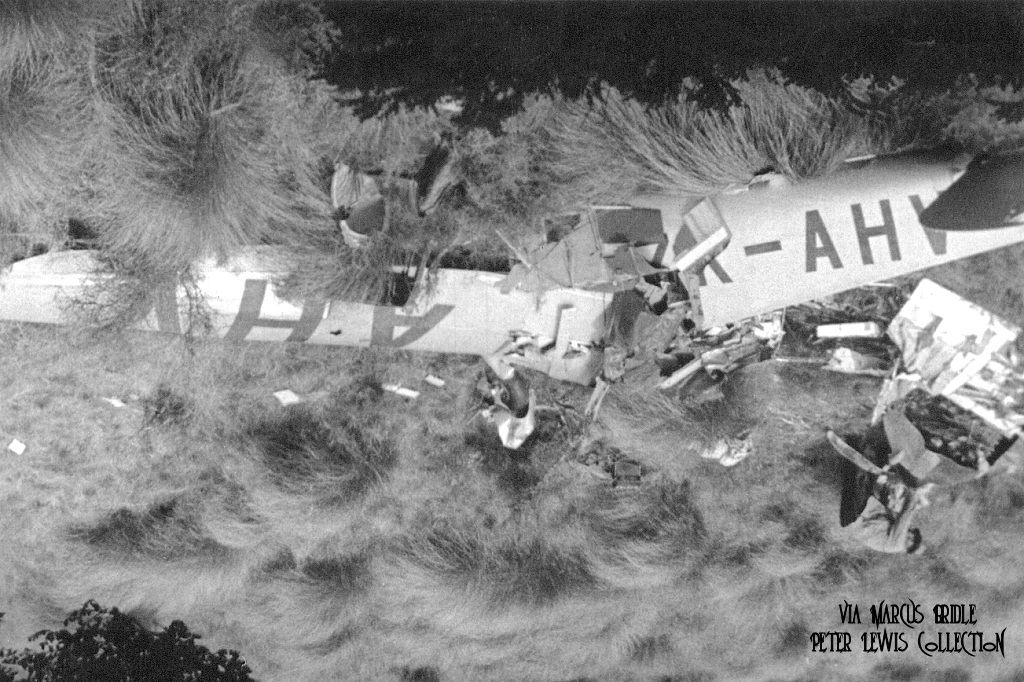  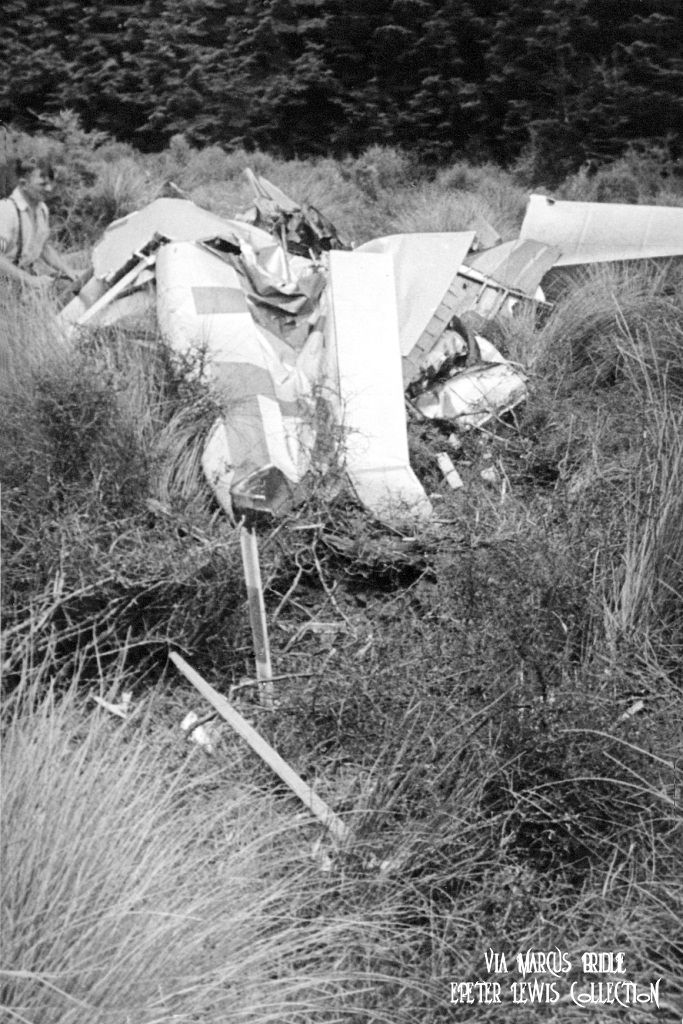 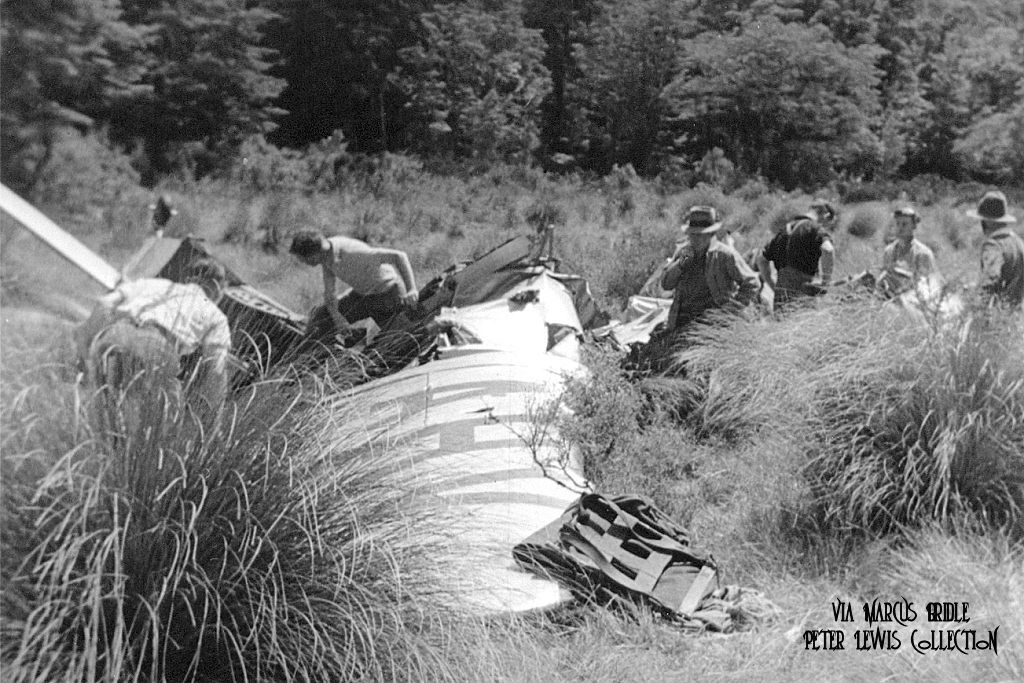 |
|
|
|
Post by thomarse on Aug 7, 2014 20:32:45 GMT 12
....and your belief is quite correct Peter. The AHV accident resulted in the death of Owen Anderson, another PWD pilot who also played a role in early topdressing trials.
I seem to recall there was at least one other victim.
Cheers - another outstanding thread!
|
|
|
|
Post by errolmartyn on Aug 8, 2014 16:03:21 GMT 12
....and your belief is quite correct Peter. The AHV accident resulted in the death of Owen Anderson, another PWD pilot, who also played a role in early topdressing trials. I seen to recall there was at least one other victim. Cheers - another outstanding thread! Anderson served earlier with the RNZAF during WWII as NZ411529 Oliver Jeffrey Couper ANDERSON. He had served with the NZ Police prior to enlistment. The other casualty was Peter Robert Bryan SYMONDS who had also served with the RNZAF, as NZ424218. Both were reported at the time of the accident as being pilots with the PWD. Errol |
|
|
|
Post by hairy on Aug 8, 2014 17:10:06 GMT 12
Hi Peter, not to be too pedantic but the second crash site photo is upside down.  Keep up the good work.  |
|
|
|
Post by Peter Lewis on Aug 8, 2014 17:54:11 GMT 12
Well if it is upside-down then that is your fault, Marcus. When you handed me the print it must have been the wrong way up.  |
|
|
|
Post by Peter Lewis on Aug 8, 2014 18:54:08 GMT 12
Ernle Clark had kept his connection with the Percival company alive during the war, and re-established himself as the company’s NZ agent on leaving his military service. Advertisement in White's Air Directory 1947 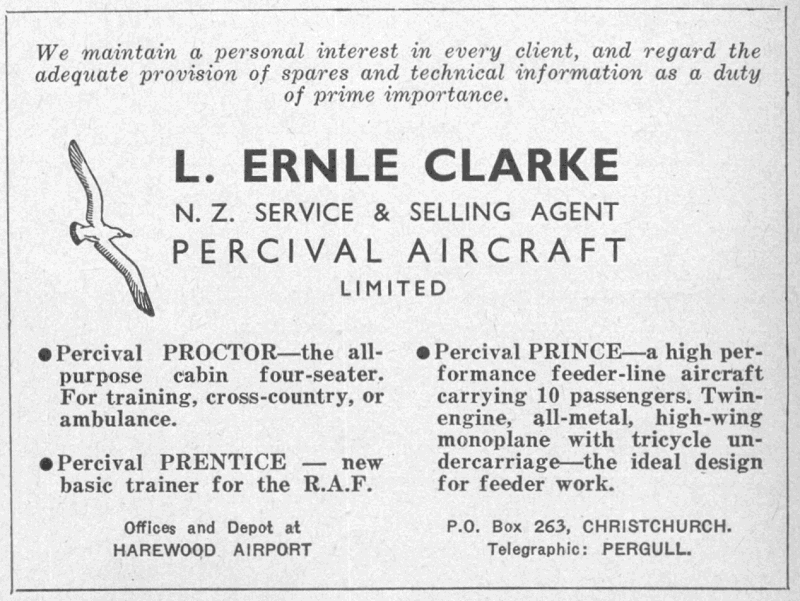 His first post-war import was Proctor c/n H.216 imported in late 1946. This had been built to military contracts by F Hills & Son as a Proctor 2 and carried the serial BV654. It passed into the hands of Percival Aircraft Ltd., Luton and was registered to them as G-AHVL on 14Jun1946. Strangely, it was then said to be a Proctor 1, and was fitted with three seats. It would seem likely that Percival’s were renovating ex-military Proctors and, after removing the heavy military equipment, converting them to four-seat configuration. Whether they installed also dual control equipment into the Proctor 2 and 3 aircraft appears unknown. The British registration was cancelled as sold abroad on 15Oct1946, but it may already have departed before that date as it became ZK-AHQ as a Proctor 2 with L E Clark, Christchurch in September 1946. In the immediate post-war era, NZ aero clubs were short of cabin aircraft. Although members could gain their training on Tiger Moths, there were only few available surviving pre-war examples of enclosed light aircraft suitable for club operation. Thus the Proctor was seen as a desirable aircraft to fill the gap. The Otago Aero Club bought ZK-AHQ from Clark and placed it on -line for their member’s use, and over the next couple of years it visited many of the southern airfields. On 5Jun1949 ZK-AHQ, flown by Neale Sutherland with passengers Gwendoline Sutherland (his wife), D W Farquharson and R E Mansfield, orbited the Invercargill airfield at low level before departing for Gore. While performing a steep turn at ‘a little over 100ft’ the aircraft nosed down and crashed, killing all on board. Proctor 2 ZK-AHQ of the Otago Aero Club at it's home base, Taieri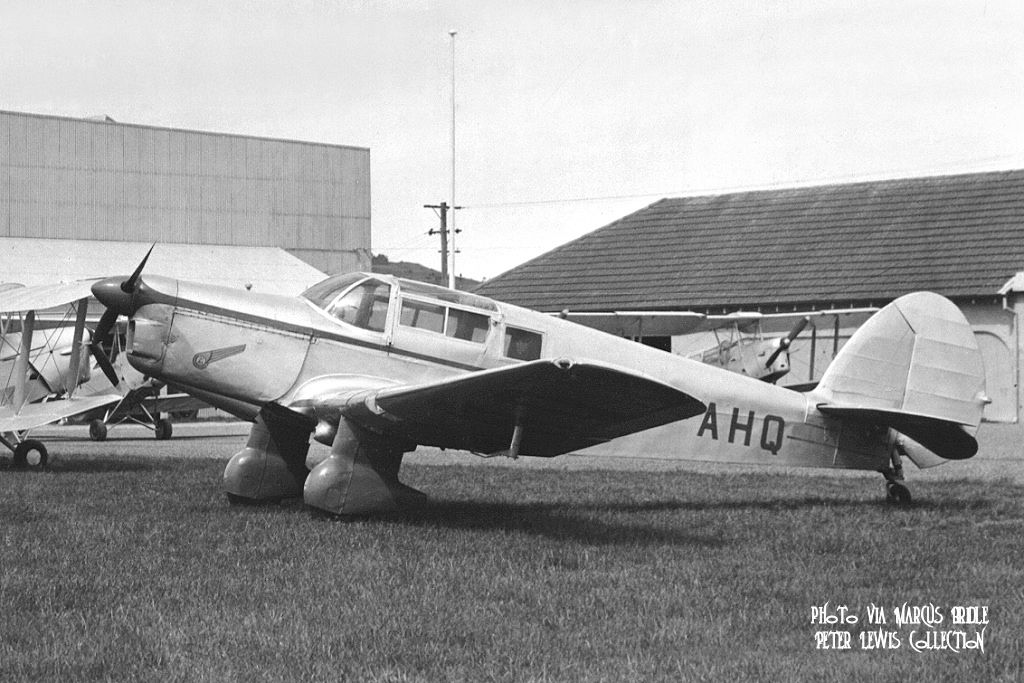 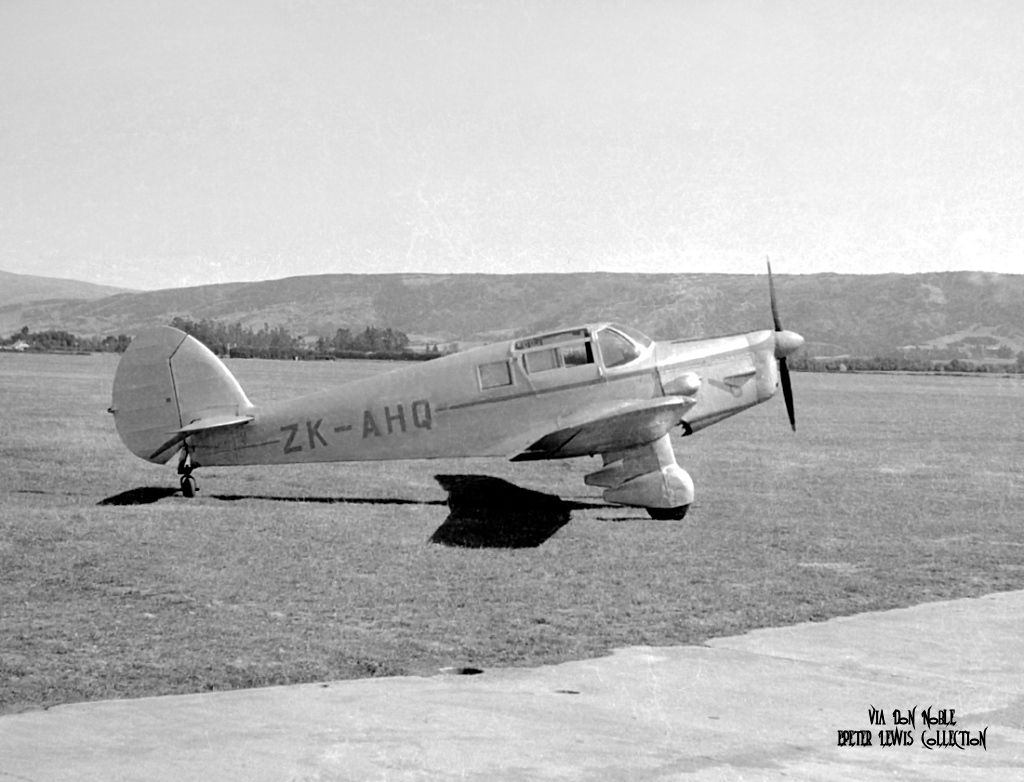 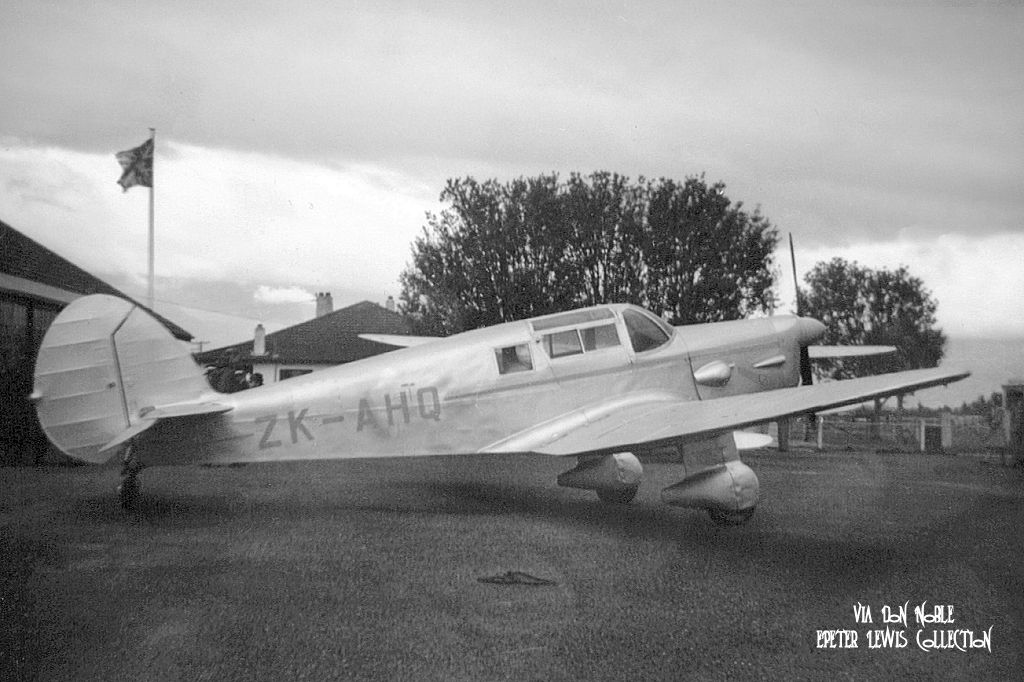 Obviously some sort of an air show on at Taieri when this one was taken Obviously some sort of an air show on at Taieri when this one was taken The rear seat passenger already looks a bit worried The rear seat passenger already looks a bit worried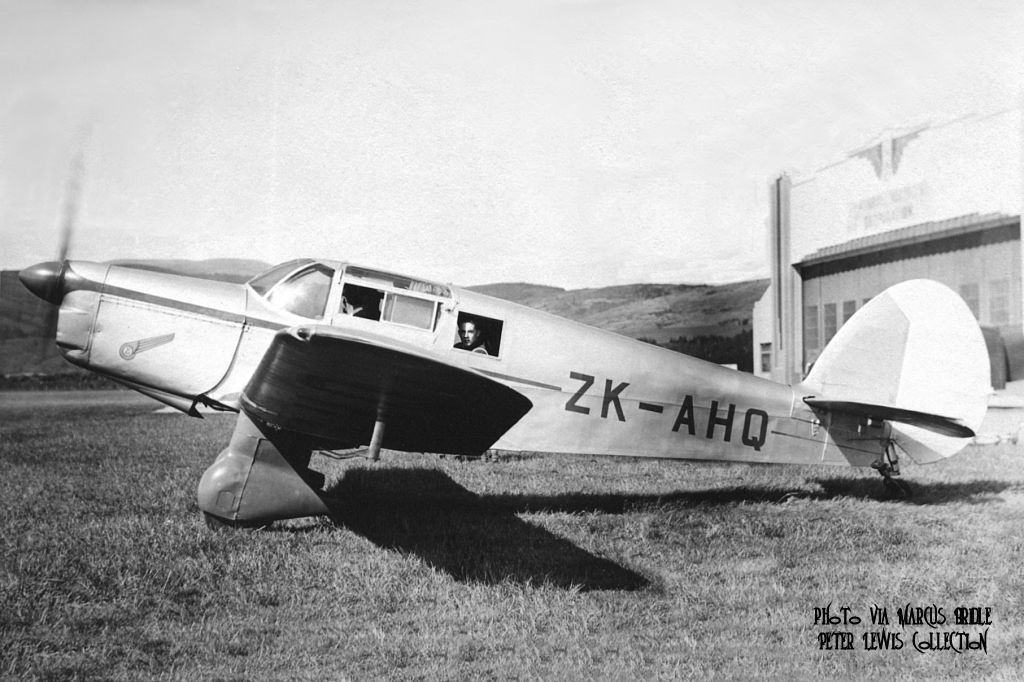 ZK-AHQ at Rongotai, outside the DHNZ hangar ZK-AHQ at Rongotai, outside the DHNZ hangar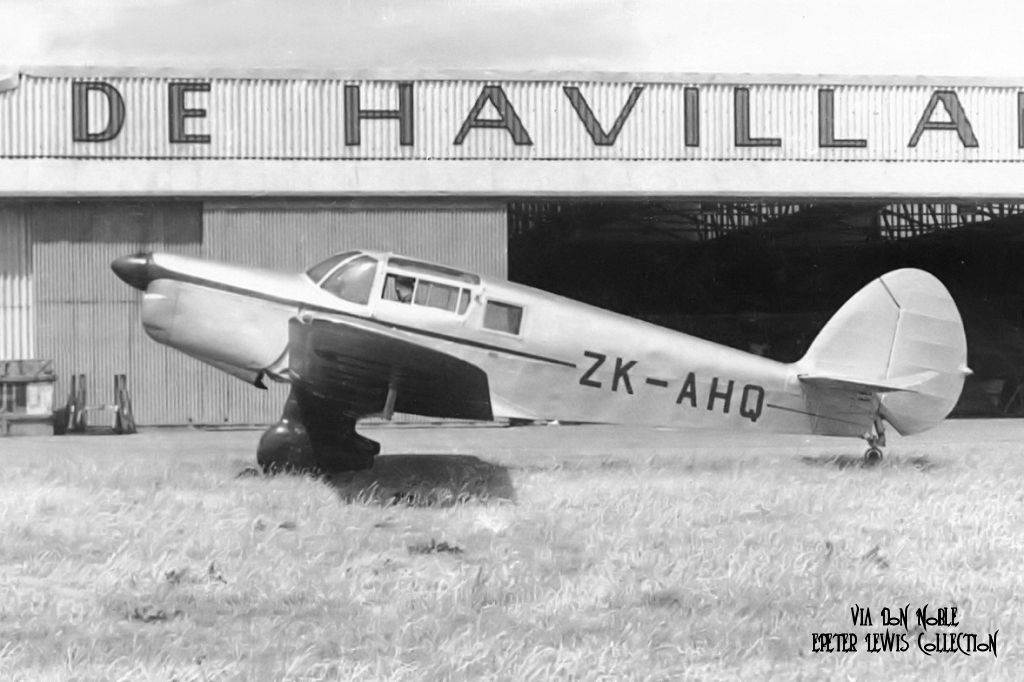 ZK-AHQ visiting Queenstown. A Remarkable photograph. ZK-AHQ visiting Queenstown. A Remarkable photograph.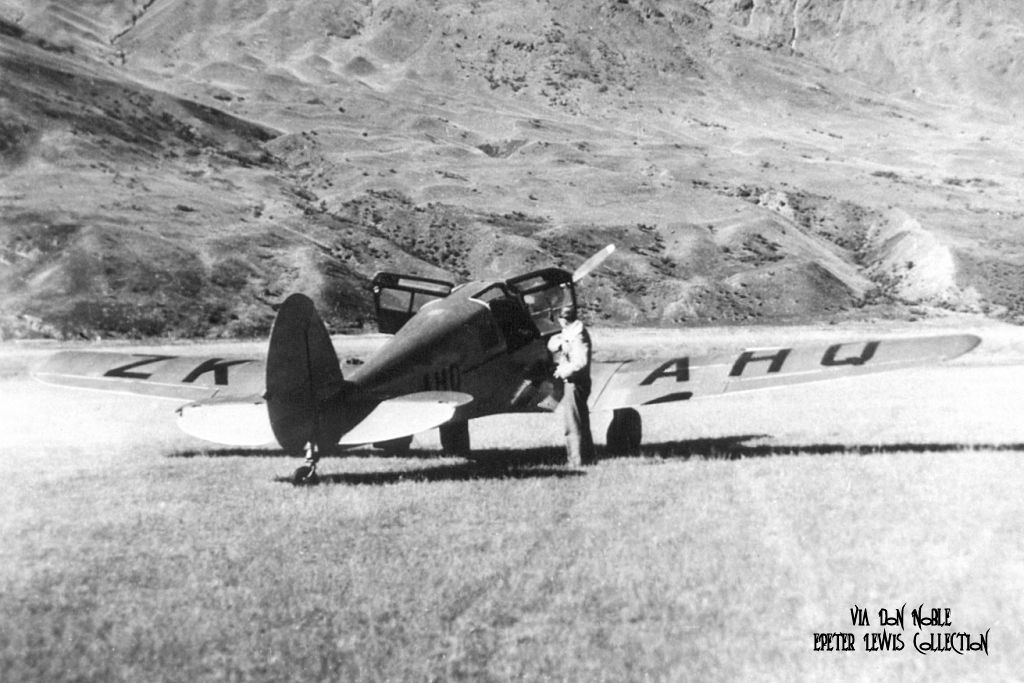 |
|
|
|
Post by errolmartyn on Aug 8, 2014 19:55:32 GMT 12
On 5Jun1949 ZK-AHQ, flown by Neale Sutherland with passengers Gwendoline Sutherland (his wife), D W Farquharson and R E Mansfield, orbited the Invercargill airfield at low level before departing for Gore. While performing a steep turn at ‘a little over 100ft’ the aircraft nosed down and crashed, killing all on board. Neal Cook SUTHERLAND Gwenda Margaret Ann SUTHERLAND (nee Keen) David William FARQUHARSON Richard Ernest MANSFIELD all of Dunedin Errol |
|
|
|
Post by Peter Lewis on Aug 9, 2014 17:52:28 GMT 12
The next Proctor imported by Clark was R7485 c/n H.1. This had been civilianized post-war as a Proctor 1 by Field Consolidated Aircraft Services and became G-AHMU on 9May1946. This aircraft is significant, as it was the first Proctor to be built by F. Hills and Sons Limited. The firm was founded in 1849 in Manchester, and since that time had developed into a substantial business engaged in timber processing and wooden construction. They had dabbled in the aircraft business prewar, building the Praga E.114 under license as the Hillson Praga, and later built a total of 882 Proctors during the period 1941 to 1945. They were also involved in the slip-wing Hurricane experiments. Proctor 1 R7485 was the first in a batch of 50, 25 being Proctor Is and the balance Proctor IIIs. This Proctor was assembled at Mangere and registered as ZK-AJY to L E Clark on 1Jul1946 with the British registration being cancelled the following day. It was soon sold to C W Hewett of Gore, the ownership change being noted on 3Sep1946.. Bill Hewett set himself up with ZK-AJY at Queenstown and offered charter and scenic trips into Fiordland and Westland as Southern Scenic Air Taxis from April 1947. He named his Proctor “The Merry Widow”, which may refer to either an opera or a movie. That relevance either of these productions to a Queenstown-based charter aircraft is unclear. Despite a number of operational problems and incidents, Hewett could see the potential for this type of air work in the Queenstown area, and soon teamed up with F J (Popeye) Lucas, who owned Auster Autocrat ZK-APO, and they traded as Southern Scenic Air Trips - the forerunner of the well-known company Southern Scenic Air services Ltd. While engaged on a whitebait freighting flight, ZK-AJY was caught by the incoming tide at Big Bay, Fiordland, 15 miles north of Milford Sound and 200 miles south of Hokitika, on 28Oct1948. Forced to use the soft sand higher up the beach, the Proctor, flown by Bill Hewett, hit driftwood and smashed the propeller when it nosed over. Efforts to repair the damage and fly the aircraft out were then constantly frustrated by inaccessibility of the site and lack of communication capability. Unable to escape, the airframe was damaged beyond repair by the surf and the weather over the following months. Eventually, five months later, anything recoverable was shipped out by the launch Alert. Proctor 1 ZK-AJY newly assembled, at Mangere 5Sep1946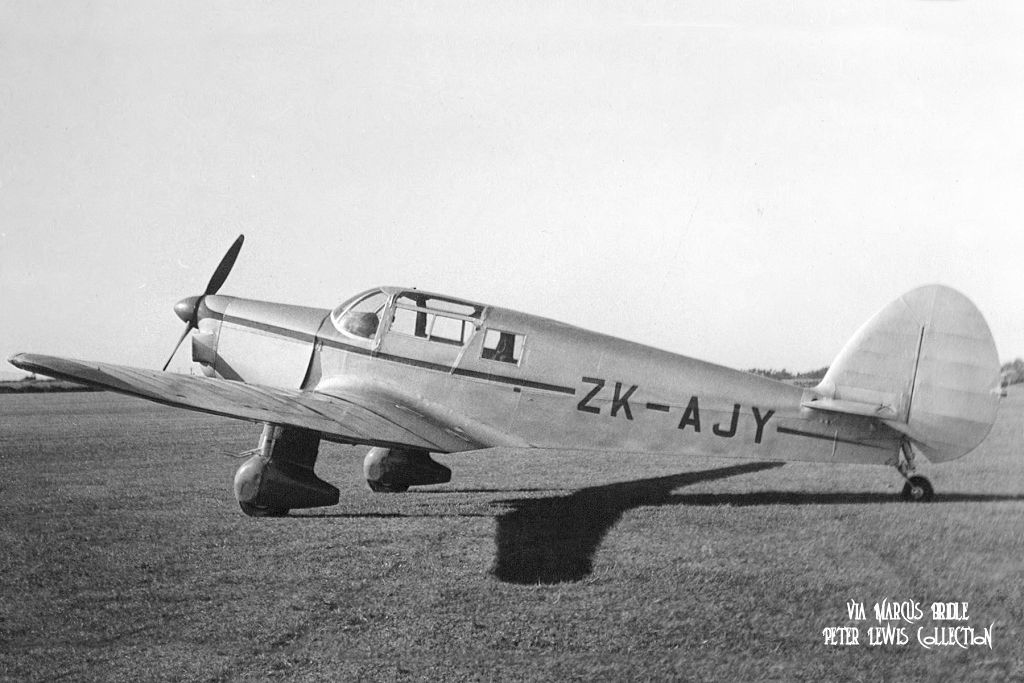 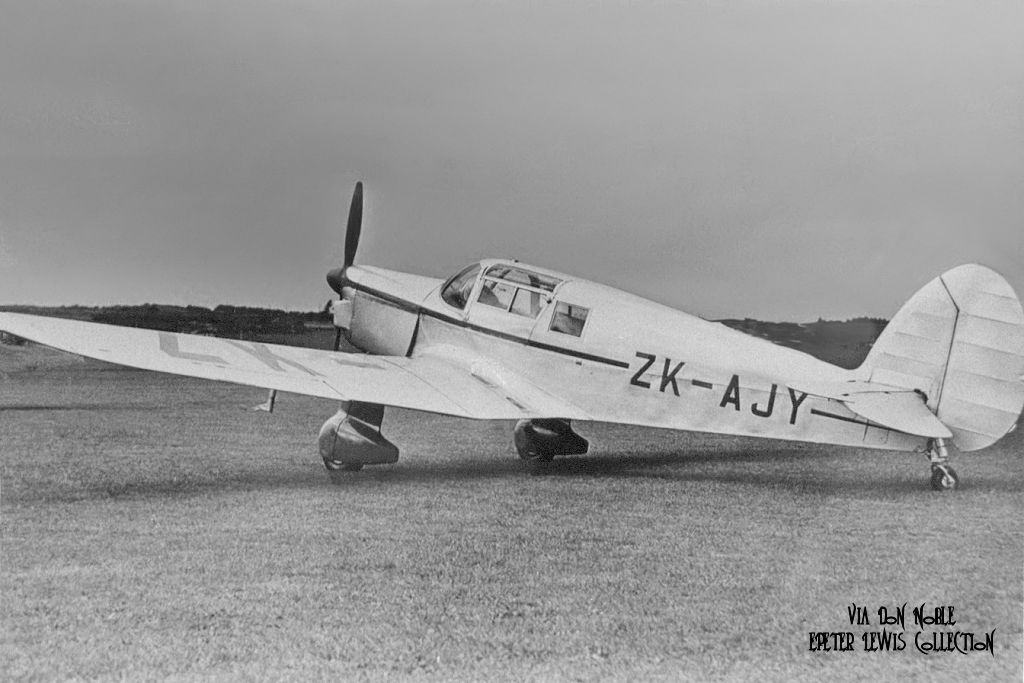 The Proctor now with Southern Scenic, parked outside their Queenstown airfield office. The Proctor now with Southern Scenic, parked outside their Queenstown airfield office.
The Auster in the hangar may well be ZK-APO.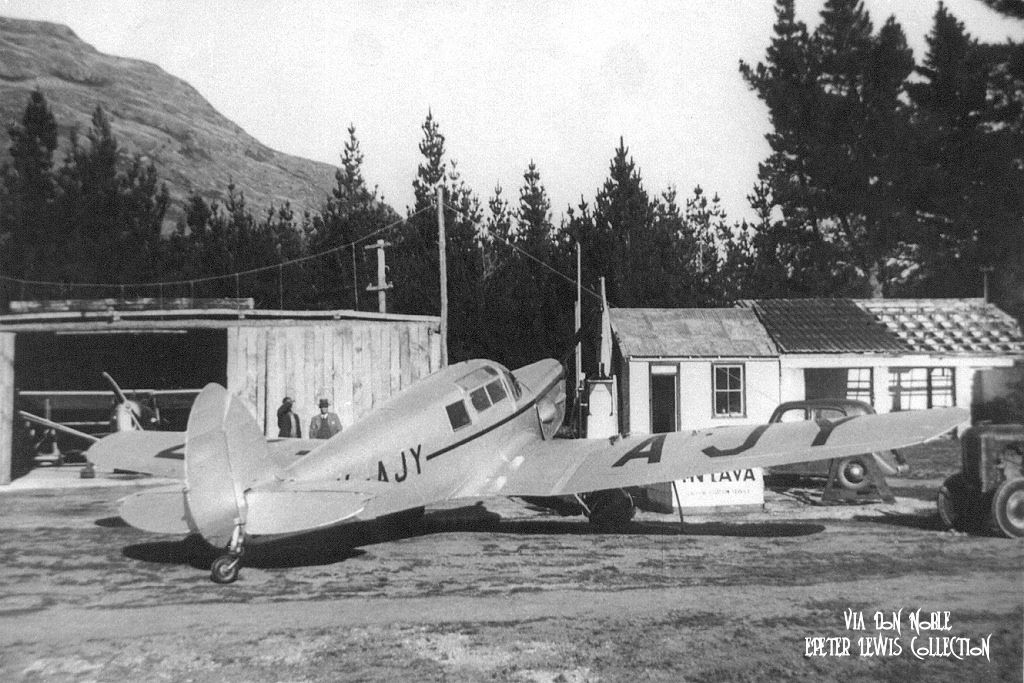 Nose artwork carried by ZK-AJY Nose artwork carried by ZK-AJY One of the back-country strips used by SSAT One of the back-country strips used by SSAT |
|
|
|
Post by Peter Lewis on Aug 10, 2014 21:23:45 GMT 12
Proctor I R7497 was another Hill-built example, c/n H.13. Civilianized post-war as G-AHVE it was registered to Percival Aircraft Ltd, Luton on 14Jun1946. It is recorded that they sold this aircraft on 21Aug1946 and I have a note saying that Field Consolidated Aircraft Services bought it as from 10Sep1946, but the British CAA records do not show them as registered owners. In any event, it was sold abroad having flown 1034 hours and appears as ZK-AKP on 6Nov1946 under Clark’s ownership. At that time, the Middle District Aero Club, based at Palmerston North, had a substantial fleet of Tiger Moths but nothing beyond that in the way of more advanced aircraft, so they bought ZK-AKP in mid-1947. As well as providing the incentive for club members to progress to a more challenging aircraft, it was expected to initiate a foray into ambulance services but the uptake was not large enough to sustain it. An Air Taxi license was obtained and ZK-AKP was kept at the club and augmented by Auster Autocrat ZK-AUG in 1950. The Proctor was sold to N R Jones of Putararu in October 1955 who flew the aircraft until June 1958. It was then retired at Tauranga and eventually broken up there 7Jul1959. Proctor 1 ZK-AKP at Mangere, probably just after the aircraft had been assembled in 1946
  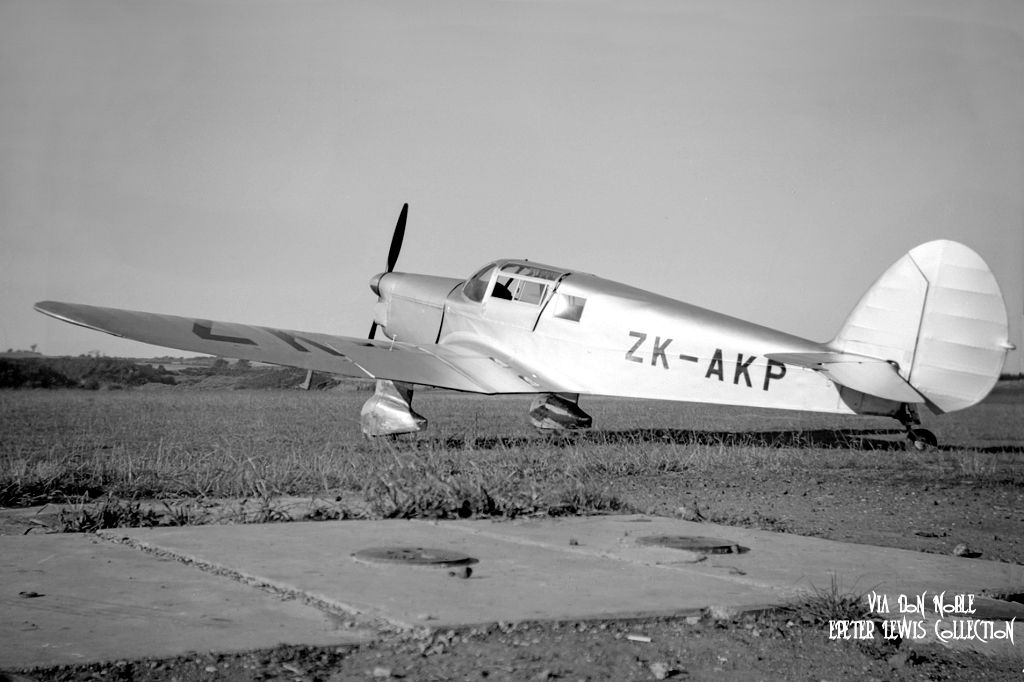 At an Aero Club meet Bridge Pa, Hastings, 5Nov1949 At an Aero Club meet Bridge Pa, Hastings, 5Nov1949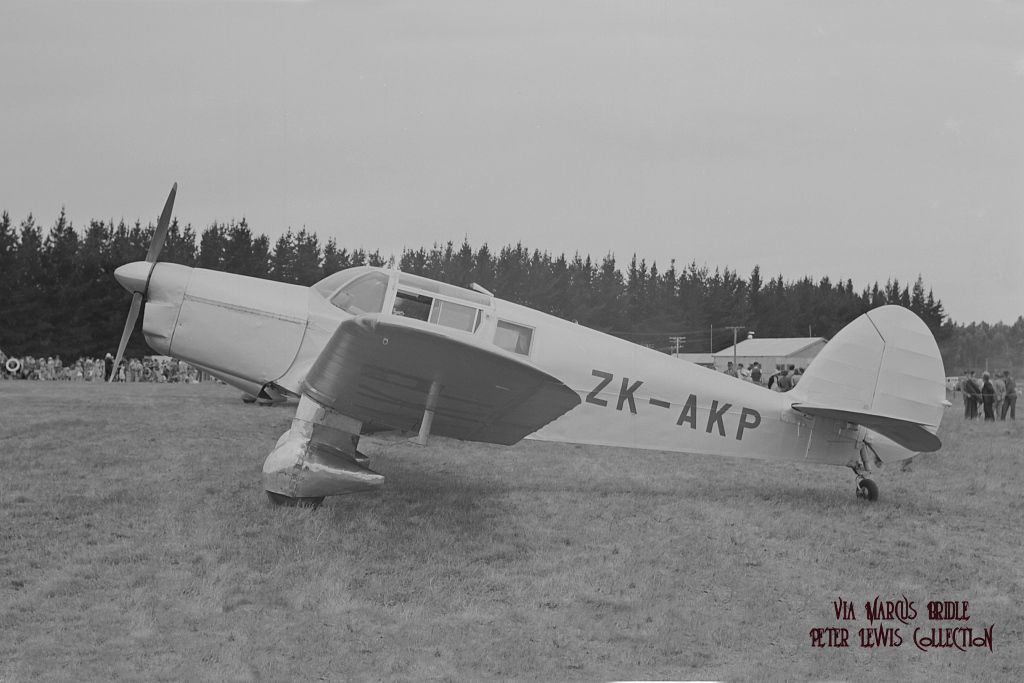 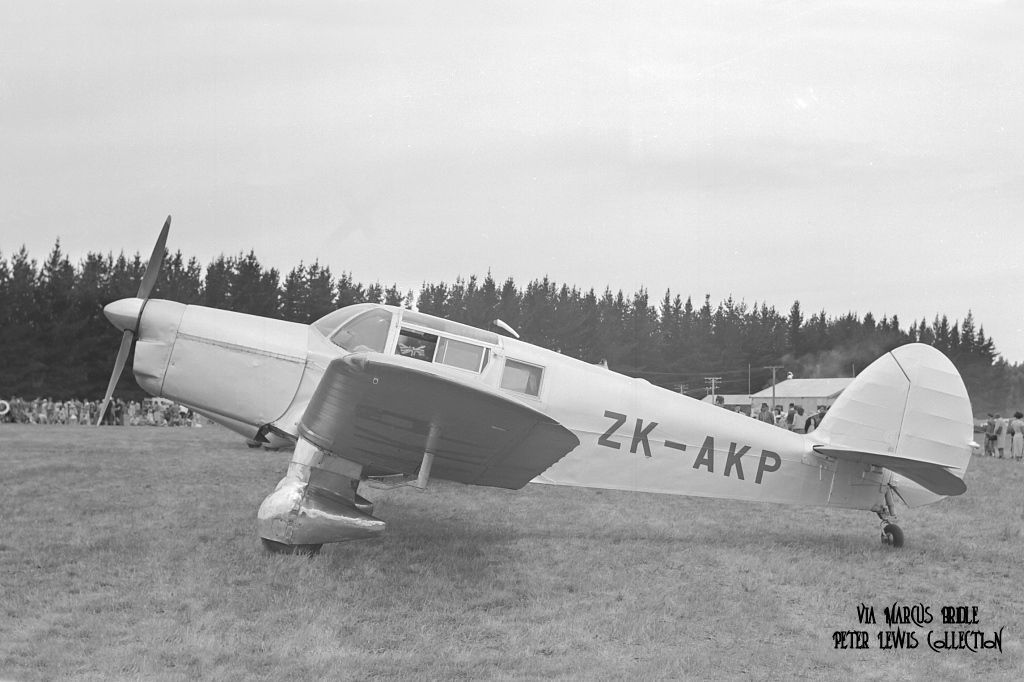 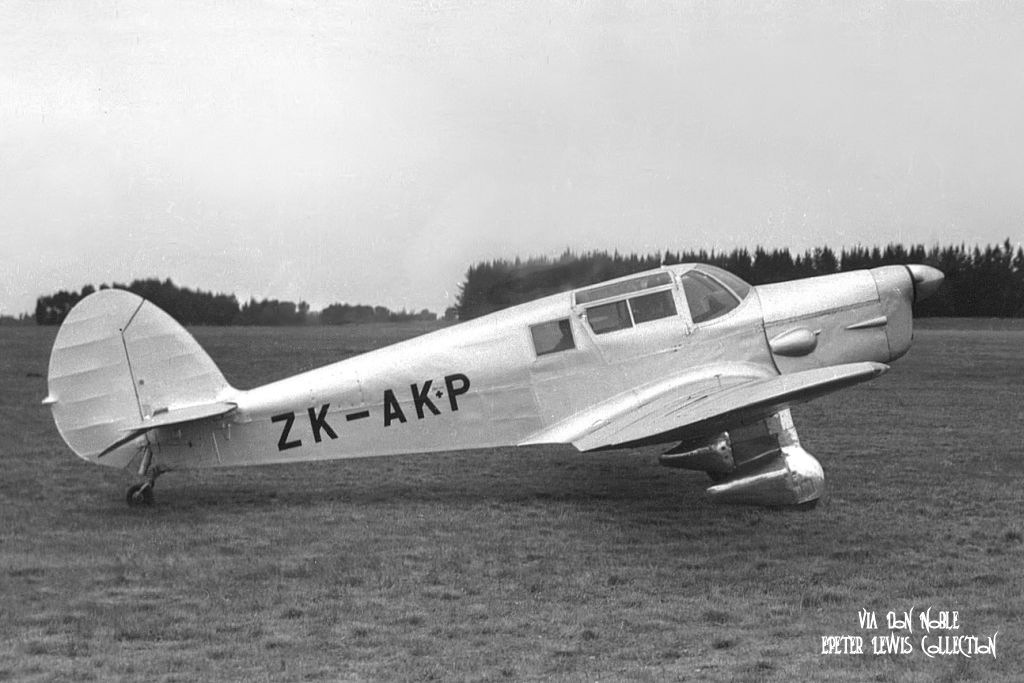 |
|
|
|
Post by Peter Lewis on Aug 11, 2014 21:37:38 GMT 12
Proctor I P6260 was a much older aircraft, being built by Percival Aircraft Ltd. at Luton with the c/n K.294. Civilianized after RAF service it went back with the Percival company and became G-AHUW on 17Jun1946. This ownership would just have been for the conversion process, as G-AHUW was cancelled on 10Sep1946. The aircraft was assembled at Mangere and became ZK-AKQ on 6Nov1946 with L E Clark. He sold it to the Nelson Aero Club in January 1947. It was a welcome addition to their Tiger Moth fleet, but reportedly few Nelson club pilots took advantage of the Proctor as it was considerably more expensive to fly. It was largely used on ambulance and charter work, with CFI John Reid kept busy due to Nelson’s geographic isolation. Although there were plans for a Nelson – Takaka scheduled service that would have utilized ZK-AKQ, this never eventuated. ZK-AKQ spun off low-level turn & crashed at Ranzau, near Nelson, 1Jun53. All occupants died immediately in the crash. The crash occurred in a paddock owned by Mr Trecaey W. Smith at Ranzau, and all four men were members of the Nelson Aero Club. They are listed as: Barry John Perry, aged 21 , single, the pilot of the aircraft and son of Mr and Mrs F. Perry, of Crscent Street, Richmond. he had been residing with an aunt in Iwa Road, Nelson. James Henry Cromie, aged 23, single, son of Mr and Mrs A.J. Cromie of 5 Oxford Street, Richmond. Ernest James Tucker, aged 29, a married man with one child, of Roto Street, Tahunanui. Donald Hall, aged 24, single, son of Mrs C.G. Hall, 59 Brook Street, Nelson They took off from Tahunanui and about 2.55pm and the accident happened about ten minutes later when they were only six miles from the airfield. A witness saw the aeroplane fall into a left hand bank, lift and then go into a spin from which it didn't recover. Apparently both Perry and Tucker held PPL's and the other two were student pilots. It was becoming apparent, after the loss of ZK-AHQ, ZK-AHV and now ZK-AKQ in apparently similar accidents, that the Proctor was not at its safest in low-level low-speed situations and needed careful handling. Proctor 1 ZK-AKQ at Mangere, 1946. 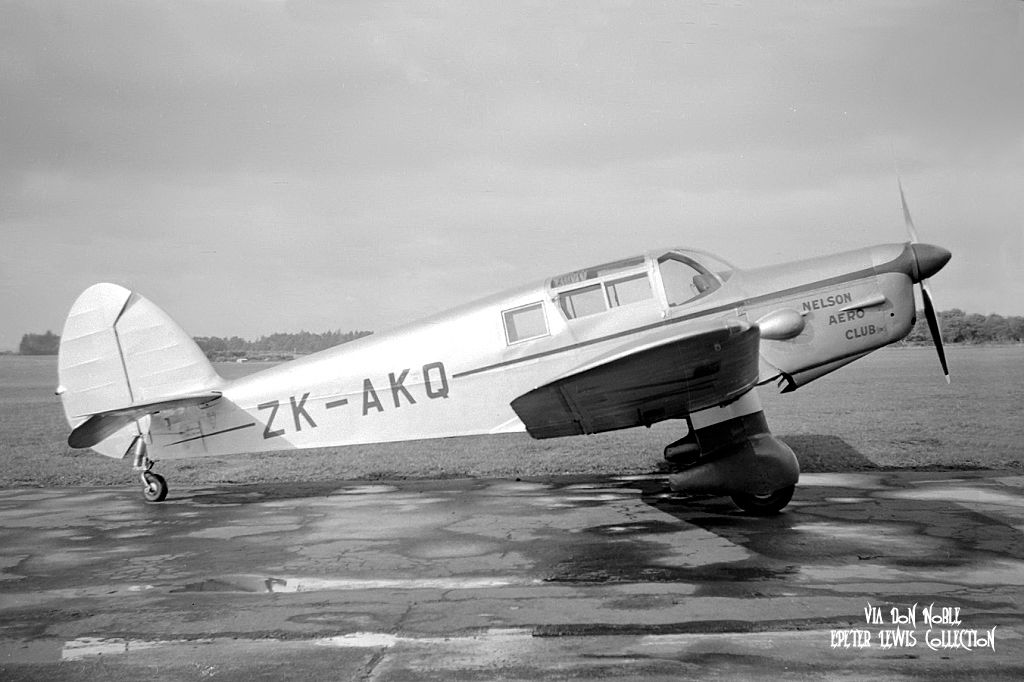 ZK-AKQ visiting Christchurch, outside the Airwork facility ZK-AKQ visiting Christchurch, outside the Airwork facility Here seen at Omaka Here seen at Omaka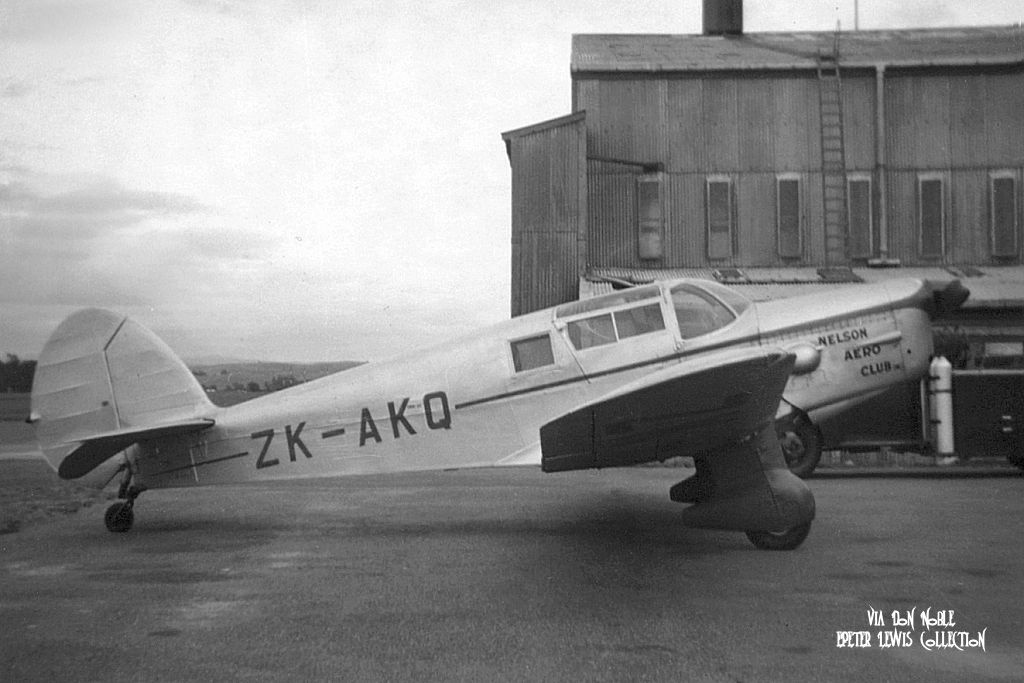 |
|
|
|
Post by errolmartyn on Aug 12, 2014 11:11:39 GMT 12
"ZK-AKQ spun off low-level turn & crashed at Ranzau, near Nelson, 1Jun53. All occupants died immediately in the crash.
The crash occurred in a paddock owned by Mr Trecaey W. Smith at Ranzau, and all four men were members of the Nelson Aero Club. They are listed as:
Barry John Perry, aged 21 , single, the pilot of the aircraft and son of Mr and Mrs F. Perry, of Crscent Street, Richmond. he had been residing with an aunt in Iwa Road, Nelson.
James Henry Cromie, aged 23, single, son of Mr and Mrs A.J. Cromie of 5 Oxford Street, Richmond.
Ernest James Tucker, aged 29, a married man with one child, of Roto Street, Tahunanui.
Donald Hall, aged 24, single, son of Mrs C.G. Hall, 59 Brook Street, Nelson"
Hall was Donald Arthur George HALL, motor mechanic.
Errol
|
|
|
|
Post by thomarse on Aug 12, 2014 13:56:10 GMT 12
A few of us did Proctor ratings with the late Harry Jenkins in AQJ. He told us young guys about the PWD accident, but I don't remember him mentioning the Nelson one (which I only found out about 12 months ago on this forum) or the Invercargill one which is news to me.
Small wonder then, that he went to great lengths to warn us about and then demonstrate the onset on the stall in a steep turn, but there was no bloody way he was going to have it develop any further! I'd describe her stall as pretty positive.
I note the shot on a back-country strip with interest. The Proctor is a great cruising beast, but short-field, she ain't!
|
|
|
|
Post by Peter Lewis on Aug 16, 2014 15:59:48 GMT 12
P6039 was another Percival-built Proctor I c/n K.318 that went to Field Aircraft Services Ltd., Surrey, postwar. It became G-AIEC as a Proctor II on 4Sep1946, and after conversion to a four-seater was cancelled on 4Dec1946 as sold abroad. Arriving in New Zealand this aircraft was registered as ZK-ALS a Proctor 1 in December 1046 in the name of L E Clark. As with other clubs, the Waikato Aero Club was interested in expanding their commercial charter activities, and so took over ZK-ALS on 13Mar1947. Initially flown in plain silver colours, it later acquired a scripted ‘Waikato’ painted on the rudder, along with most of the other Waikato club aircraft. These commercial activities were successful, to the point where Waikato also bought the new Proctor 5 ZK-APH in September 1947. After operating the two Proctors in tandem for a while, they sold ZK-ALS to the Rotorua-based charter operator Blackmore's Air Services Ltd., with the change of ownership being registered on 6Dec1950. In Blackmore’s service, the Proctor was a replacement for the Desoutter 1 ZK-ACJ which had crashed at Taneatua on 8Nov1950. James Aviation bought out the Blackmore operation in September 1951 and continued to fly ZK-ALS from the Fenton Street field until the Proctor was withdrawn from use in 1958, being replaced by a Cessna 182. As well as operating on tourist and charter flights, ZK-ALS was also used by James Aviation on photo mapping work. This seems to have entailed fitting was called at the time ‘an ex-R.A.F. camera’ to the Proctor so that accurate maps could be created of any area that was going to be topdressed by their DC-3 aircraft to establish the exact boundaries. ZK-ALS changed ownership to L A Mayor, Hamilton as from 2Nov1959 and then to R D Simpson, Panmure, Auckland, but I do not believe that either of these owners actually flew the aircraft. It was broken up at Ardmore in January 1961.
Early days for ZK-ALS. At Mangere. 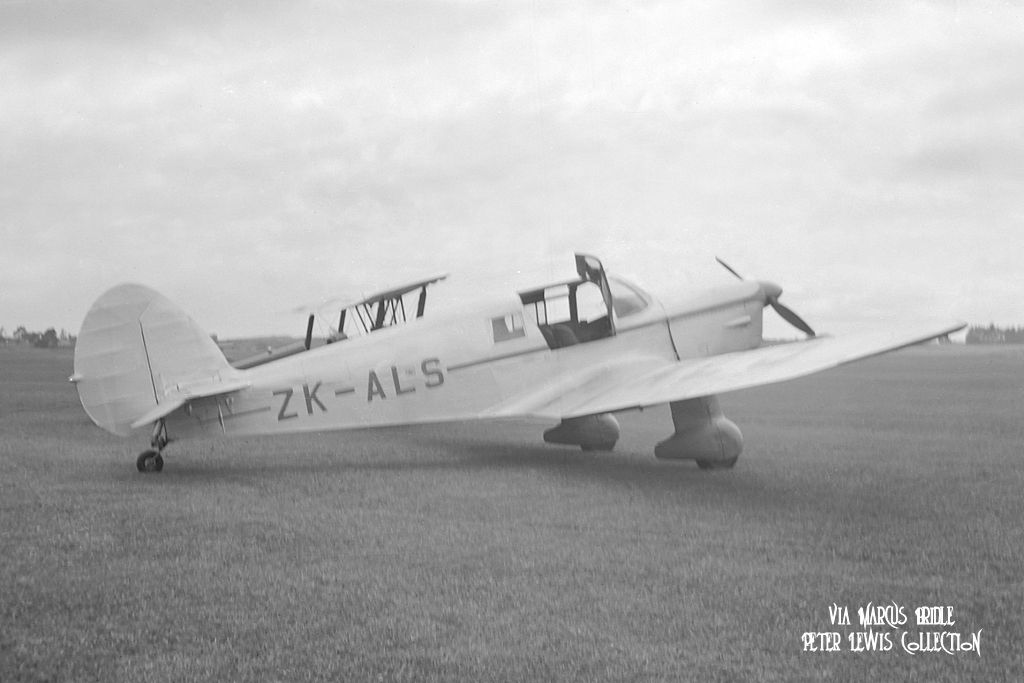 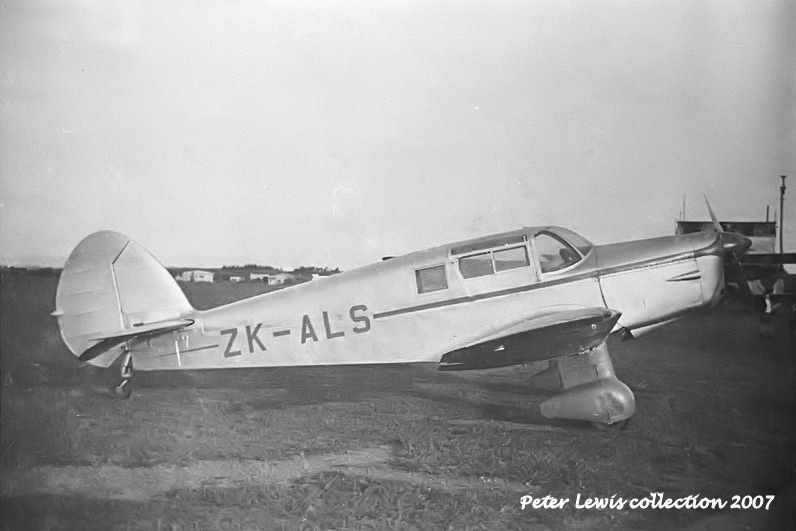 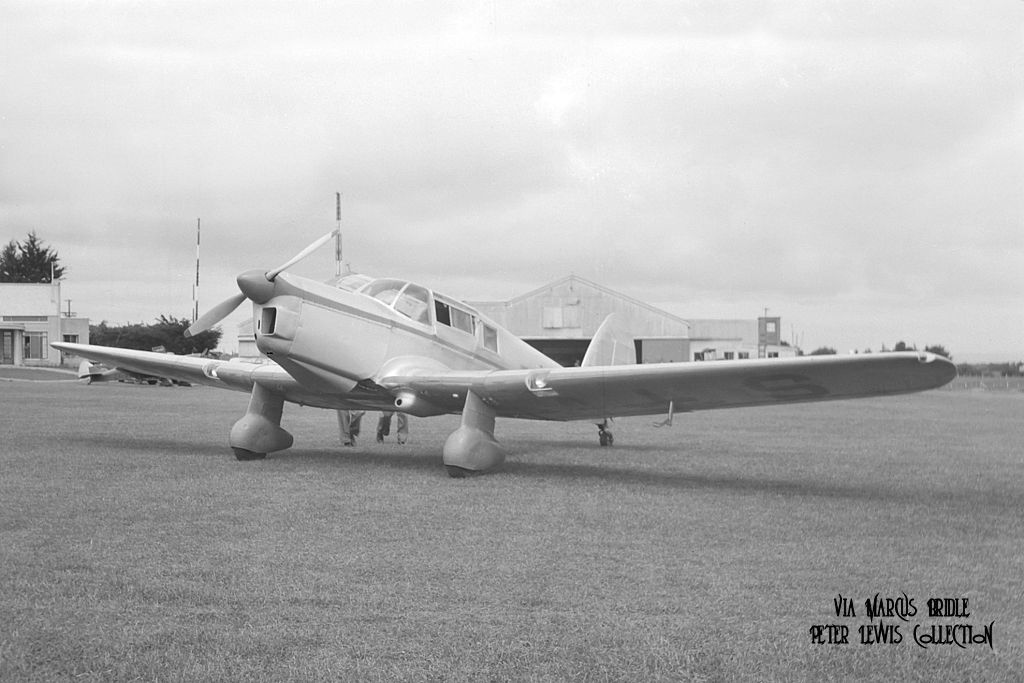  ZK-ALS at home base, Rukuhuia ZK-ALS at home base, Rukuhuia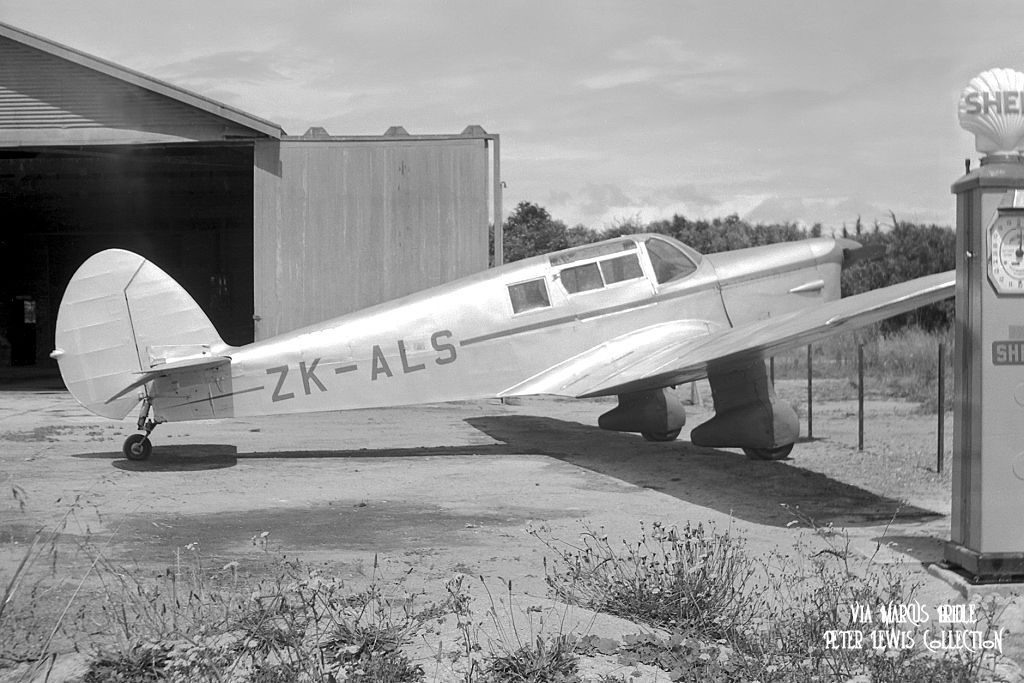 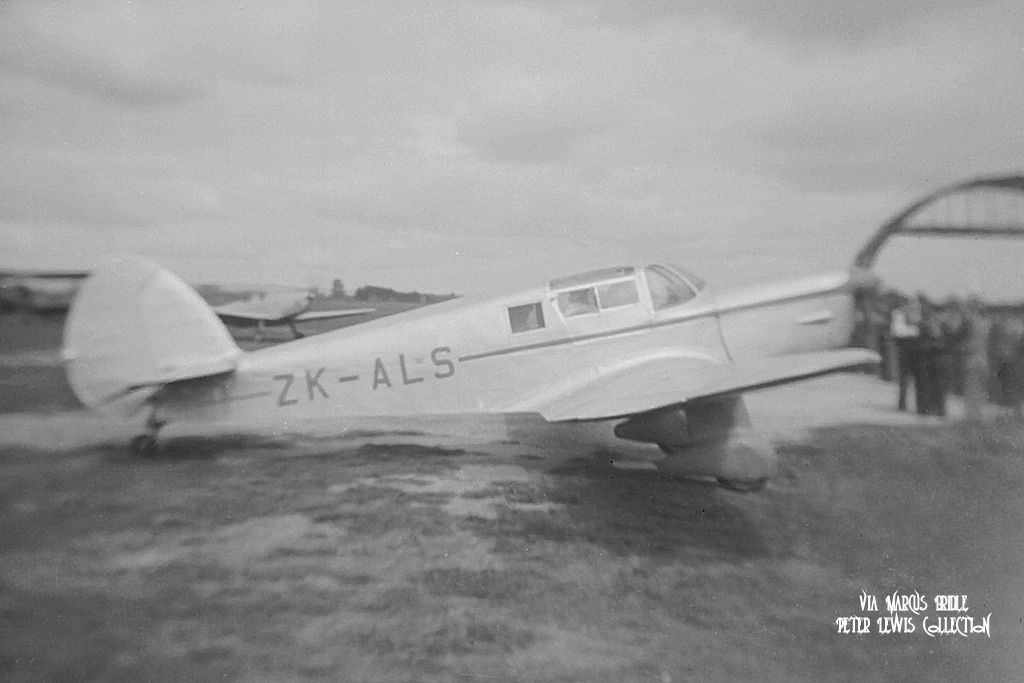 Visiting Rongotai, June 1947 Visiting Rongotai, June 1947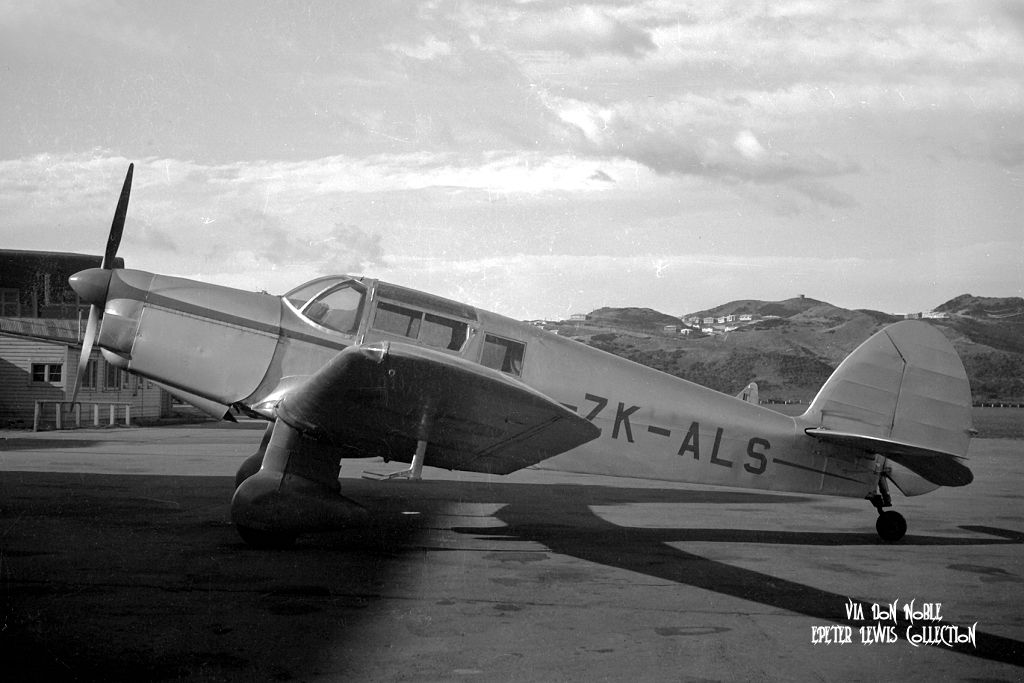 Now in full fleet colours - WAC badge on the nose and 'Waikato' script on the rudder Now in full fleet colours - WAC badge on the nose and 'Waikato' script on the rudder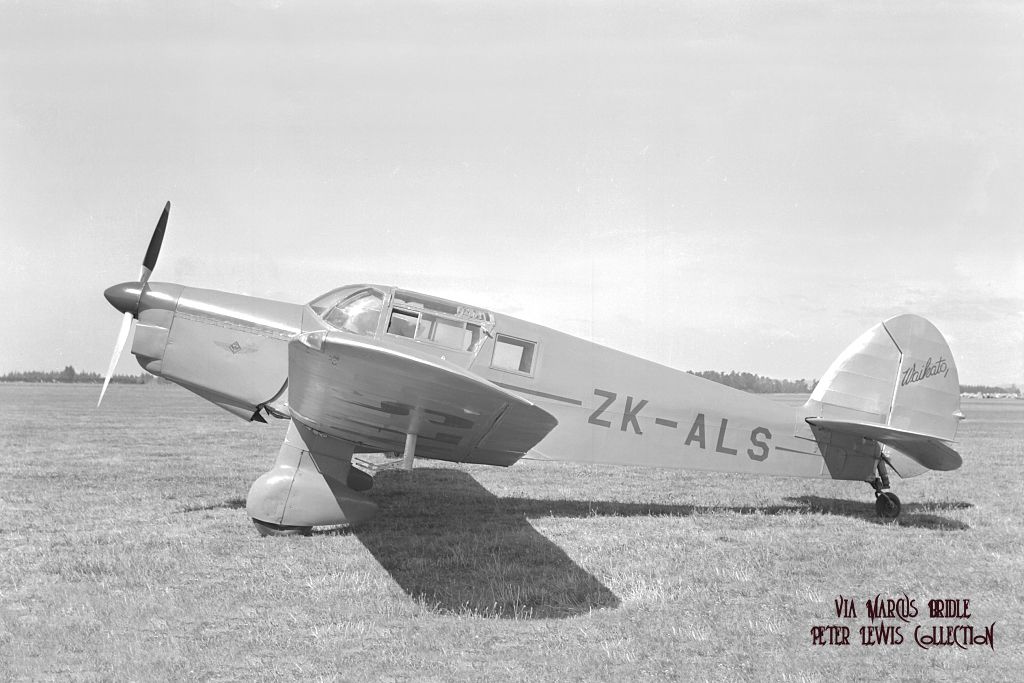 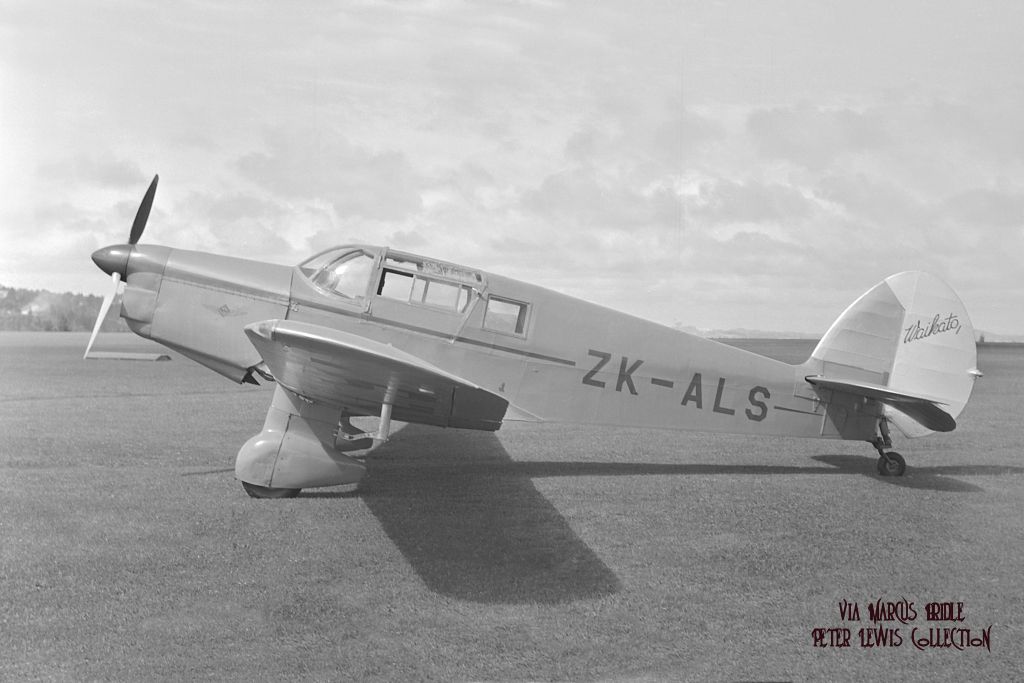 Next three are dated 24Jun1950, at Rukuhuia Next three are dated 24Jun1950, at Rukuhuia. Note the tail of the Robertson Tiger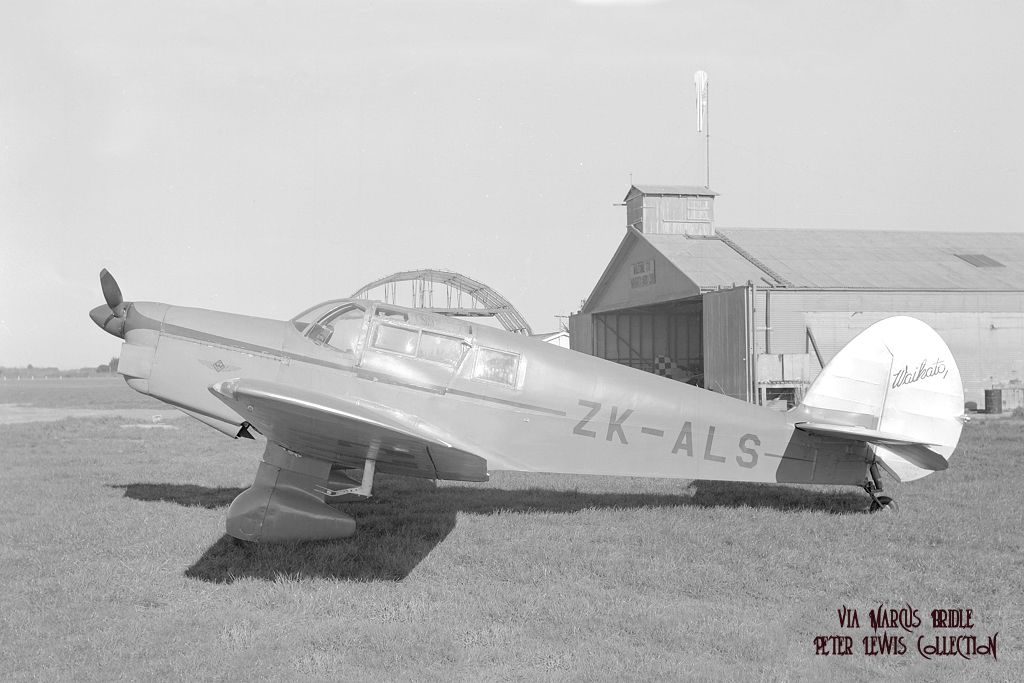 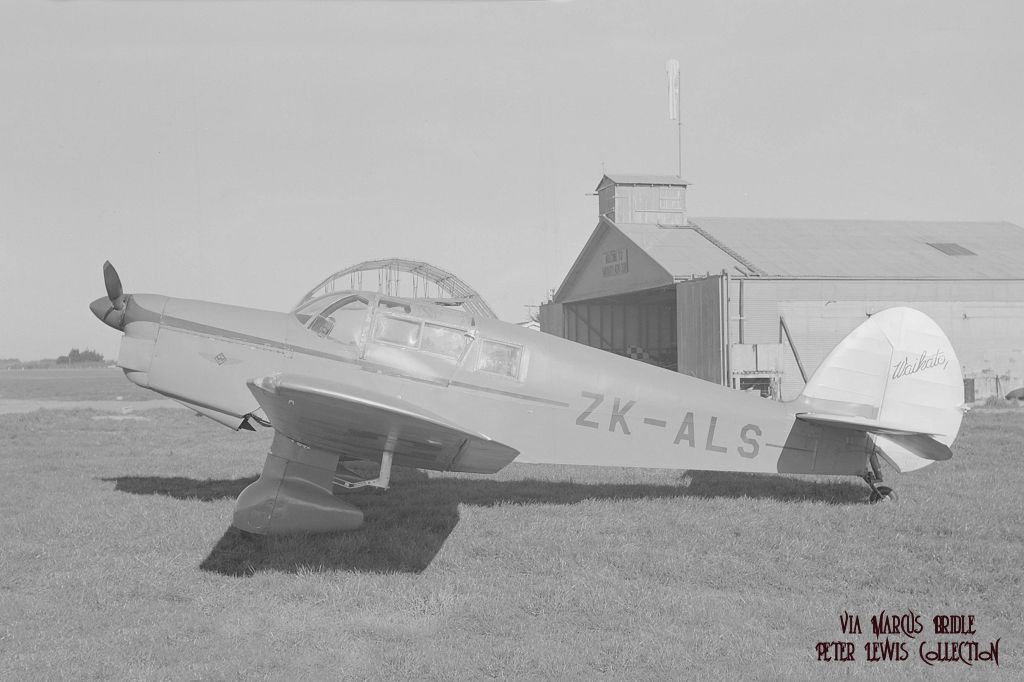 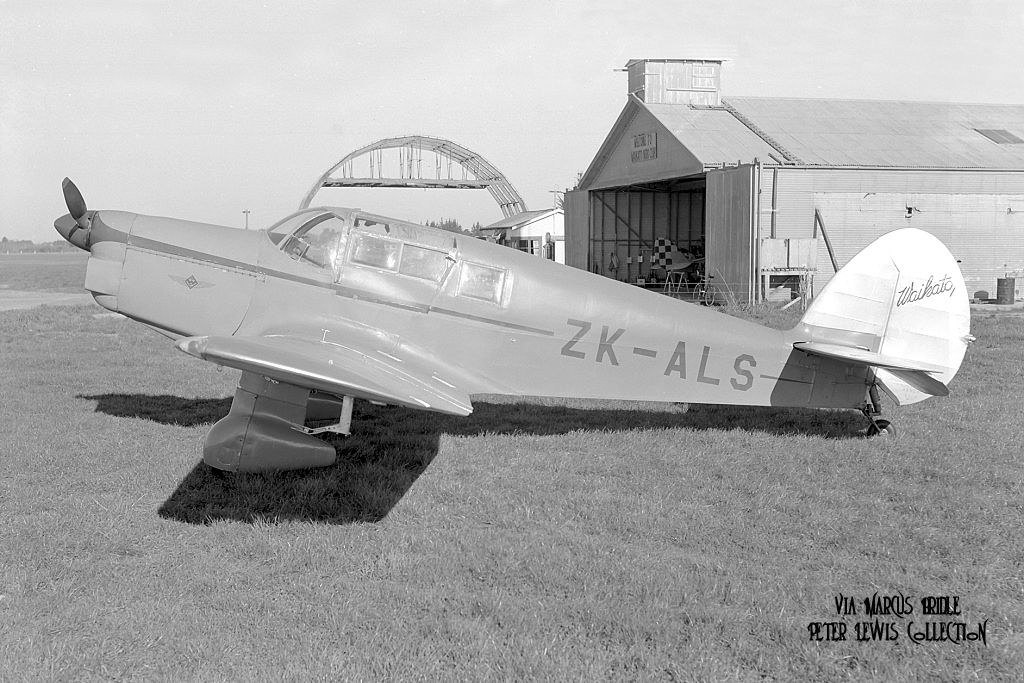 Departing Rukuhuia Departing Rukuhuia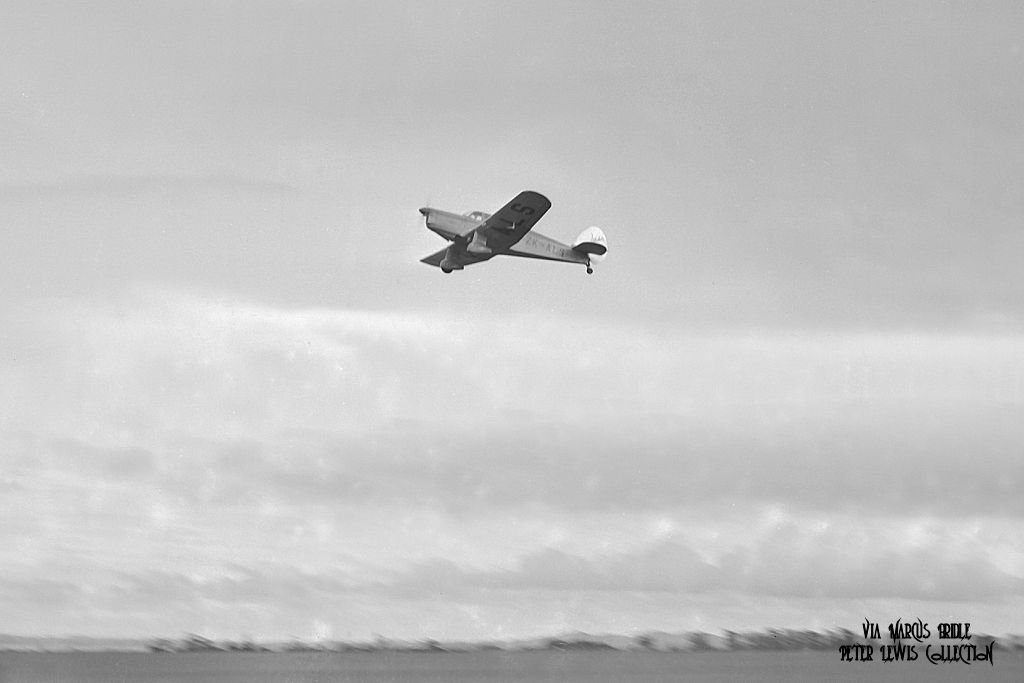 Away, visiting. Tauranga? Away, visiting. Tauranga?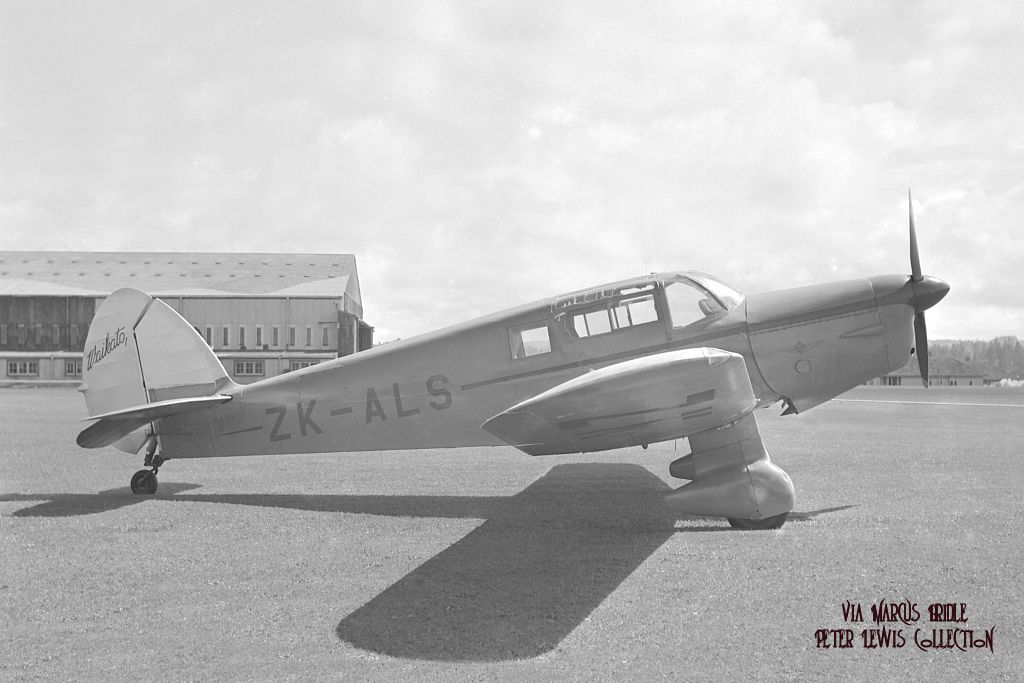 I have included this not-so-good photo, as it seems to show the fuselage of ZK-ALS repainted in a darker colour - note the colour change at the base of the fin. I have included this not-so-good photo, as it seems to show the fuselage of ZK-ALS repainted in a darker colour - note the colour change at the base of the fin.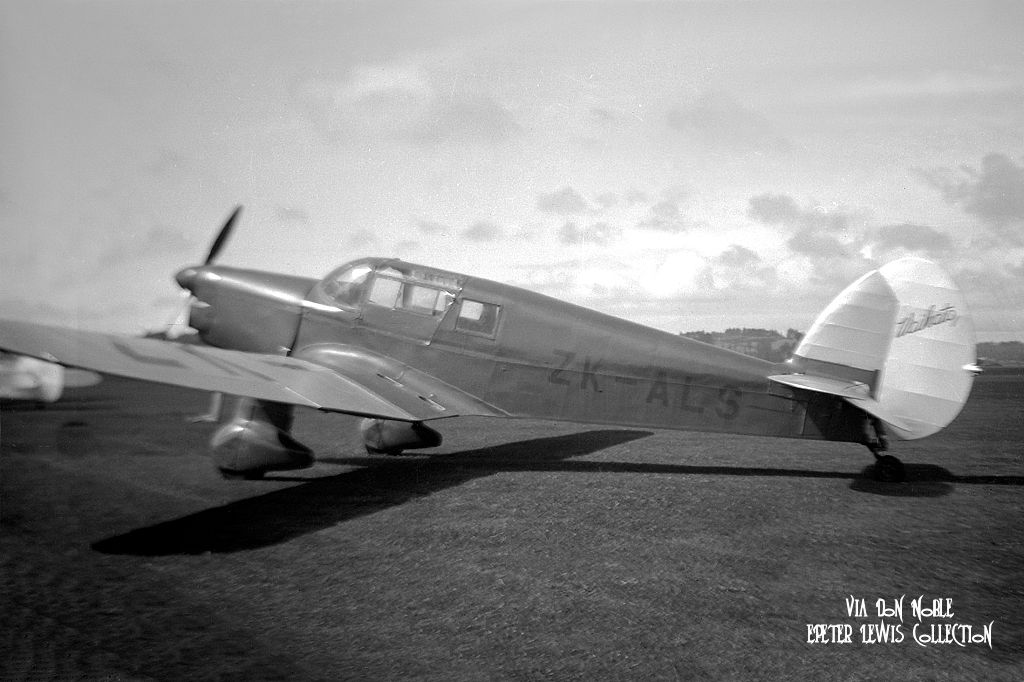 Off to Rotorua - now repainted into Blackmore's fleet livery. Off to Rotorua - now repainted into Blackmore's fleet livery.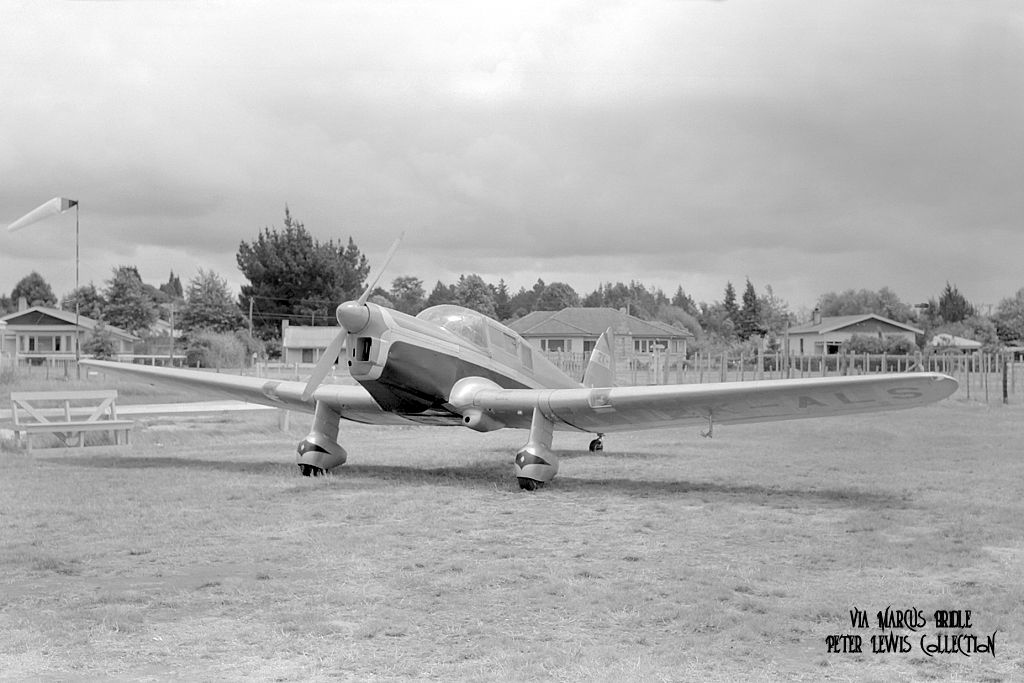 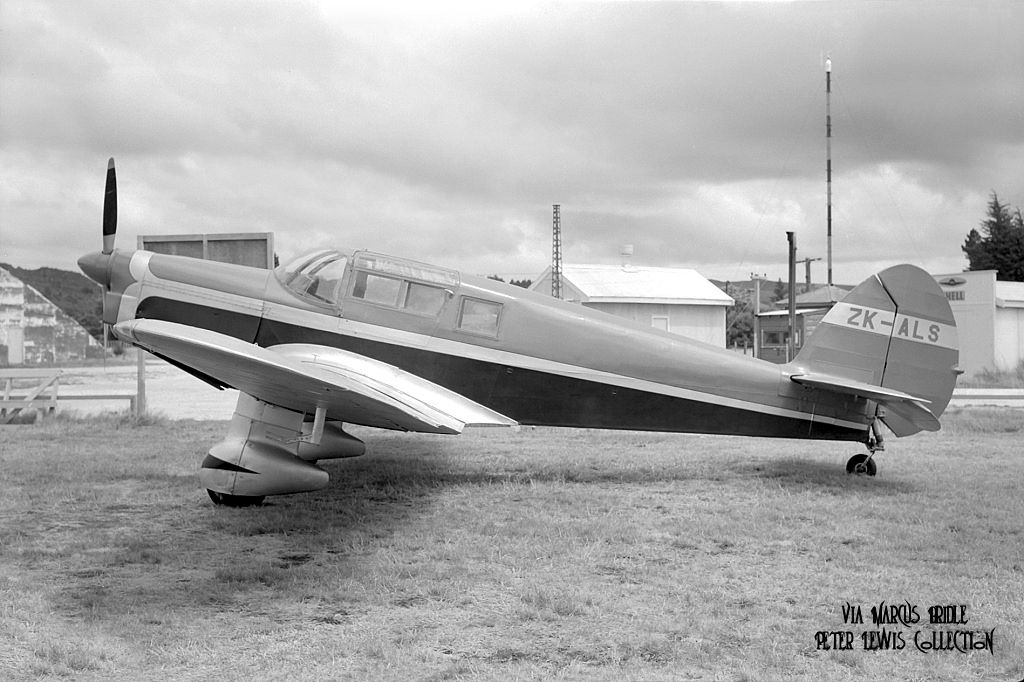 Outside Blackmore's Rotorua hangar Outside Blackmore's Rotorua hangar 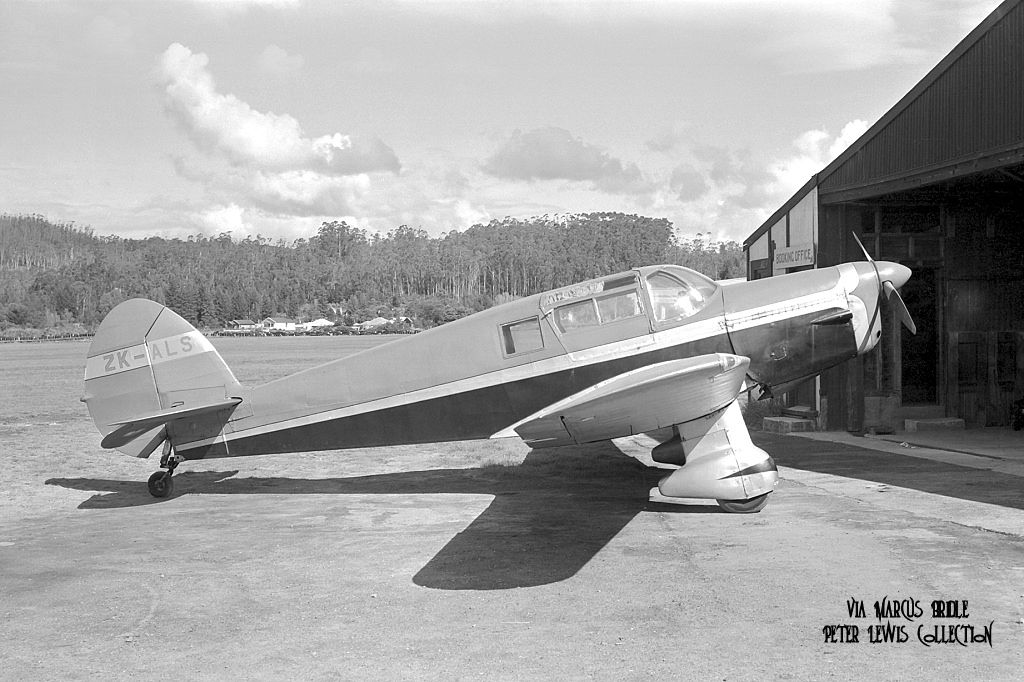 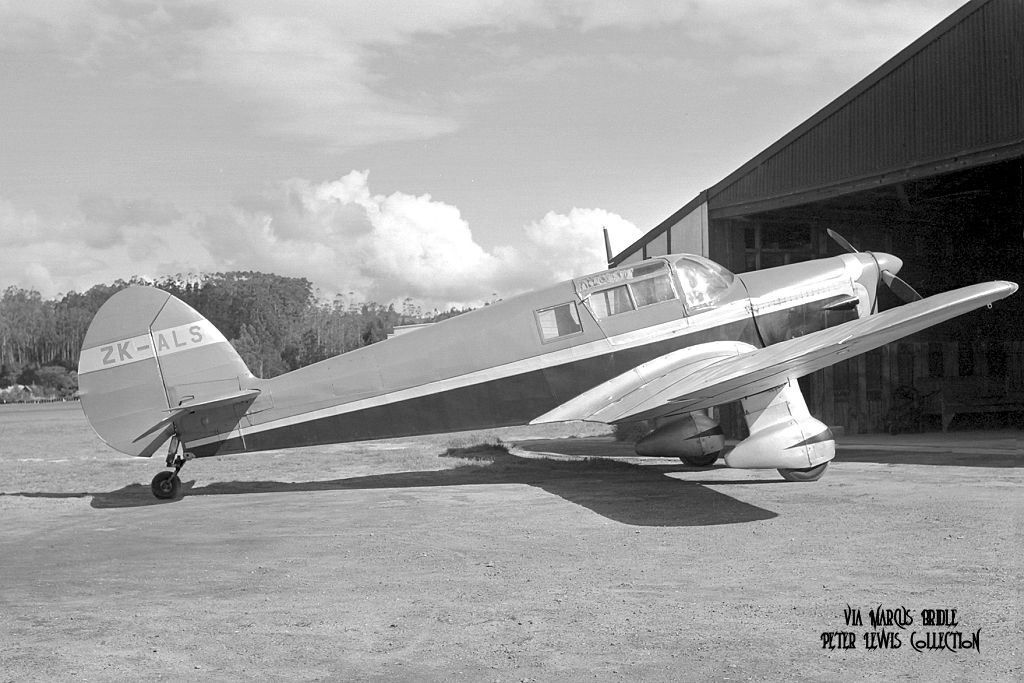  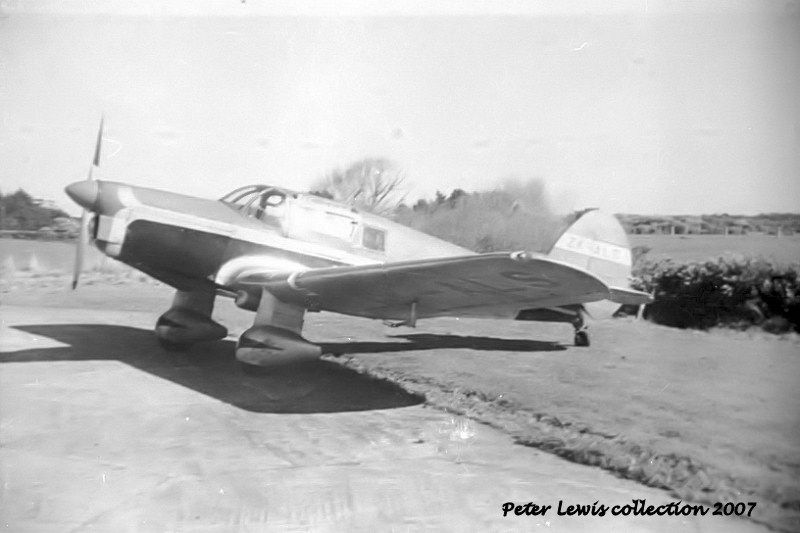 and the view from the inside looking out and the view from the inside looking out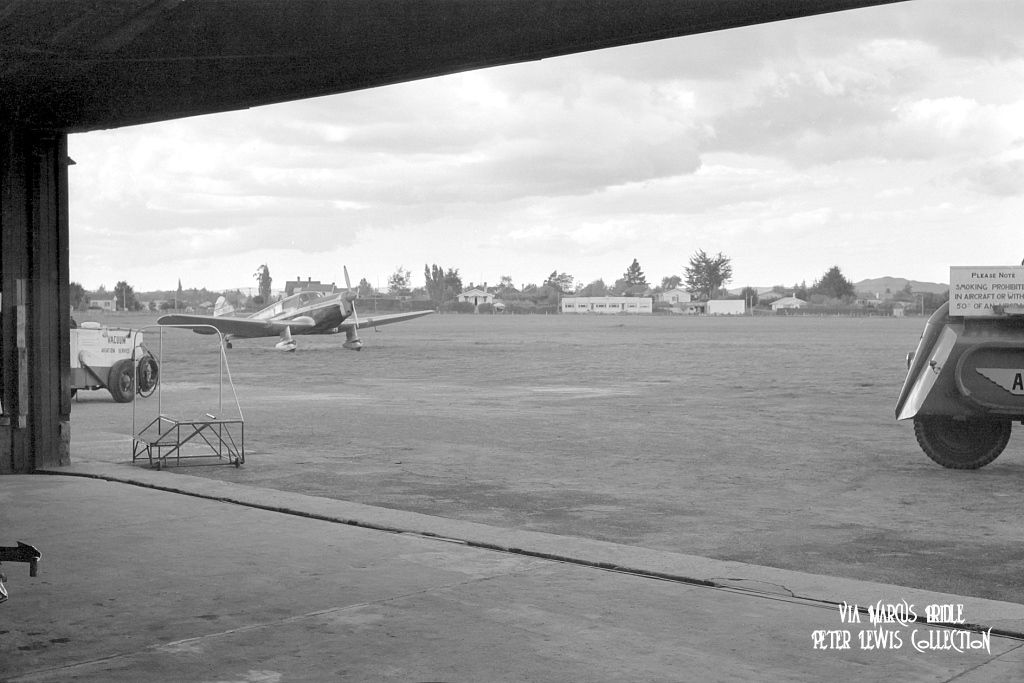 ZK-ALS at Mangere after the James Aviation transfer ZK-ALS at Mangere after the James Aviation transfer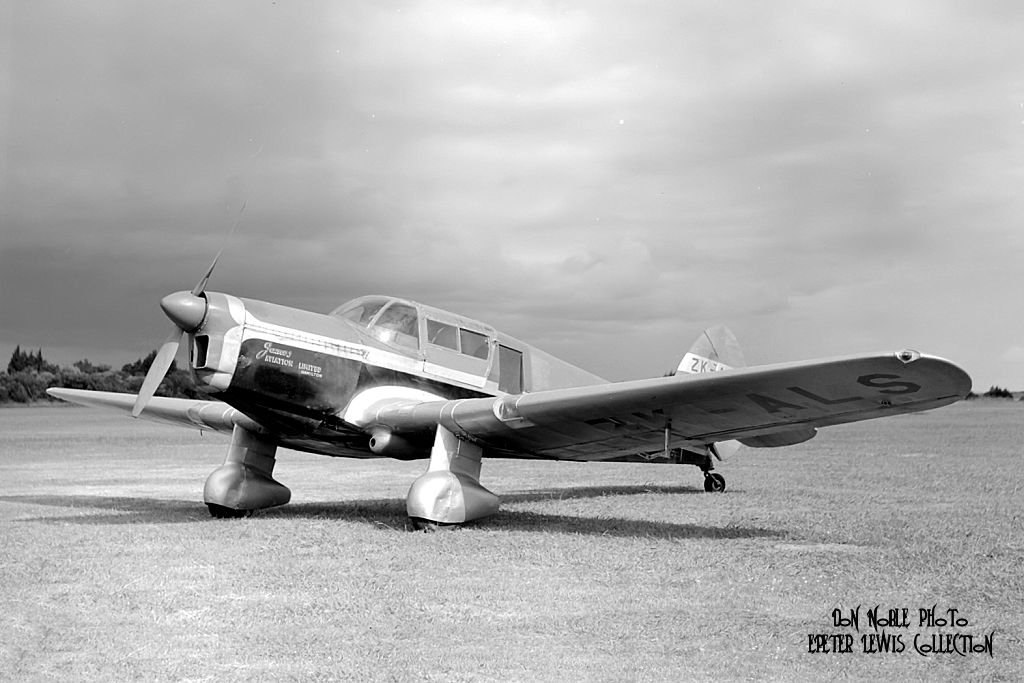 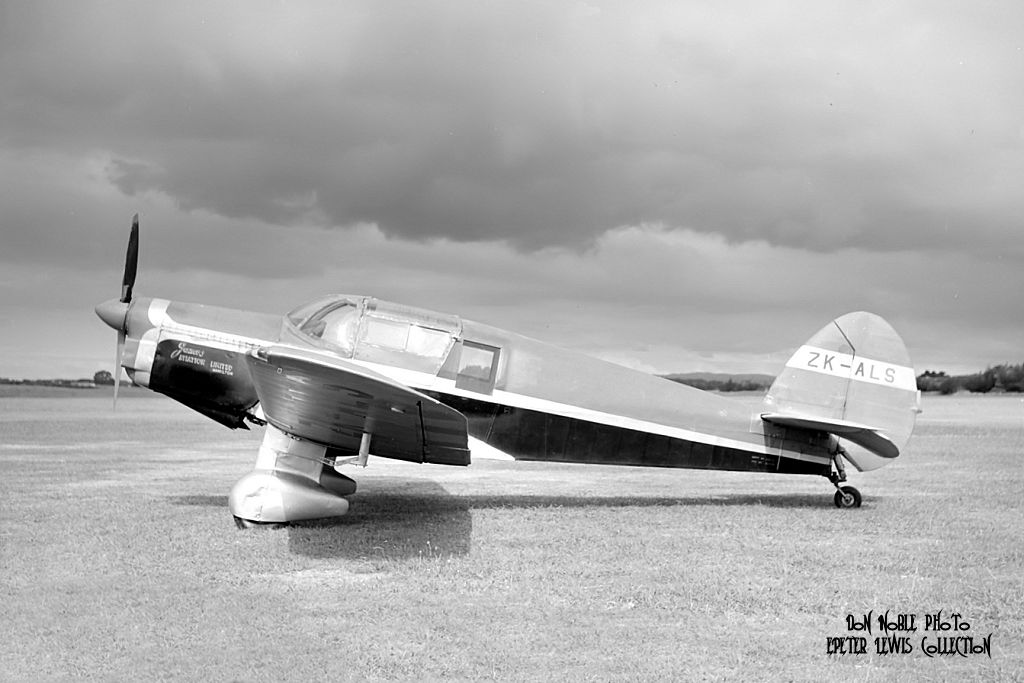 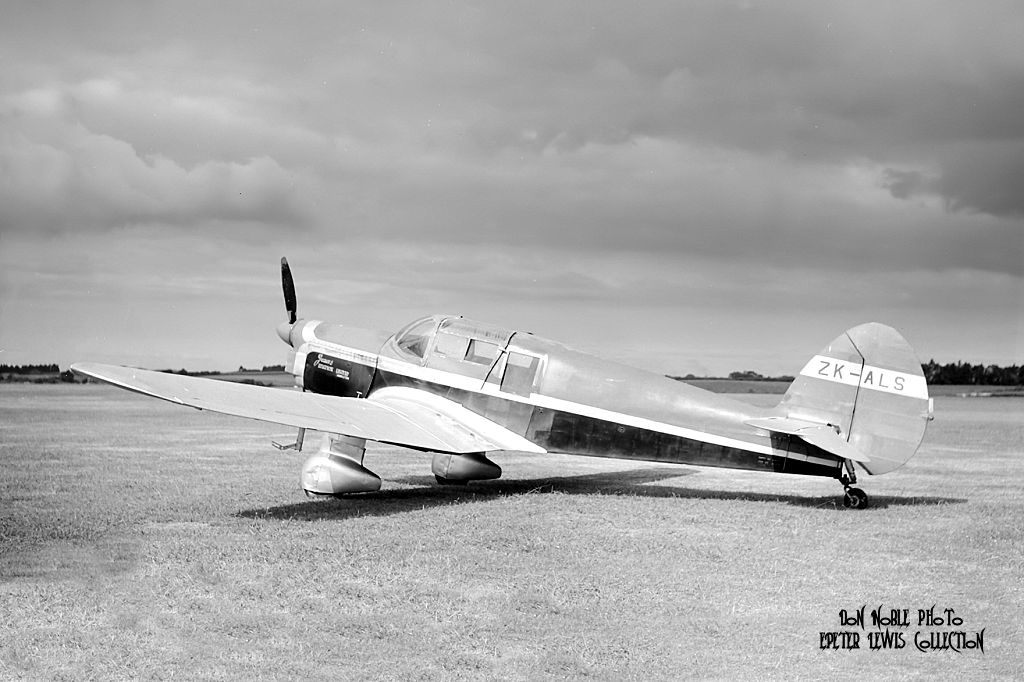 |
|
|
|
Post by Peter Lewis on Aug 17, 2014 22:33:35 GMT 12
Clark then bought in two more Proctors. The first of these was a Proctor 3, Hills-built and one of a batch of 200, with the c/n H.550. After RAF service as LZ792 it had become G-AIYF with Field Aircraft Services on 5Dec194. Civilian conversion completed, it was sold abroad on 6Feb1947. Arriving at Mangere, it was assembled to become ZK-ANZ with L E Clark, and the NZ CofA was dated 16Feb1947. Delivered to the Wanganui Aero Club, at some stage it underwent modifications to allow use as an air ambulance. It served Wanganui for five years before moving north to the Kaitaia Aero Club on 26Aug1952. Just over a year later, on 9Nov1953, ZK-ANZ was sold to D T Revell of Auckland. Apparently Tom Revell was a real estate agent who specialized in farm sales and he used the Proctor to visit his farm clients. In mid-1955 the Proctor had deteriorated, and was grounded after the wing fabric started to delaminate. Sold to N R Jones, Putararu, owner of Proctor ZK-AKP, it was broken up at Mangere and presumably the parts used to keep his other Proctor in the air. The registration ZK-ANZ was cancelled on 13Jun1960. Proctor 3 ZK-ANZ at Wanganui, September 1947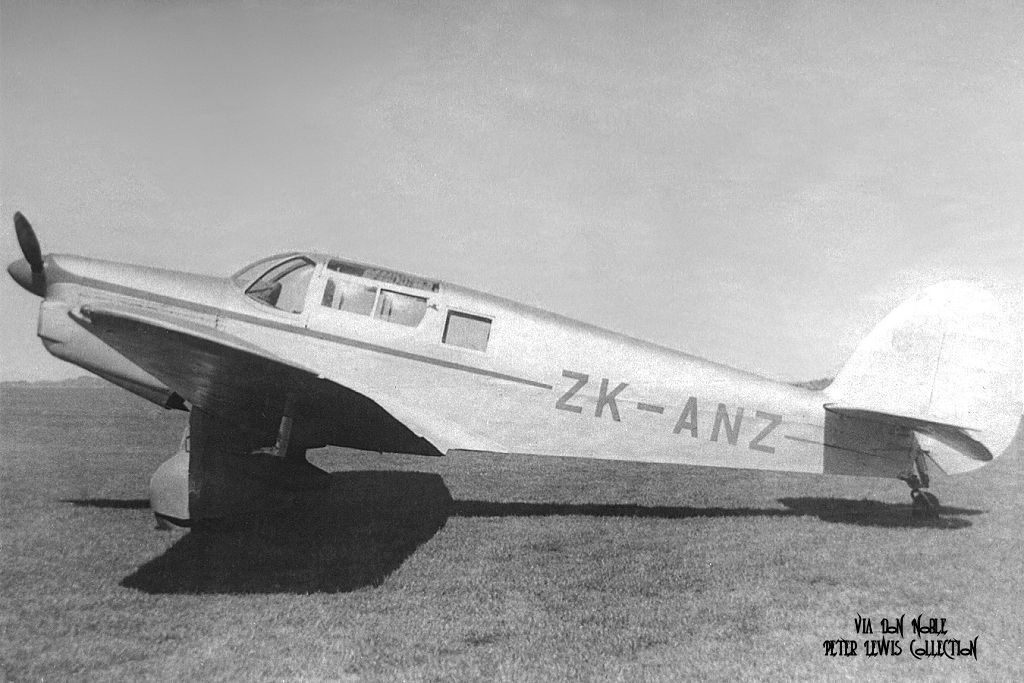 Refuelling at Rukuhuia, Hamilton, 27Sep1947 Refuelling at Rukuhuia, Hamilton, 27Sep1947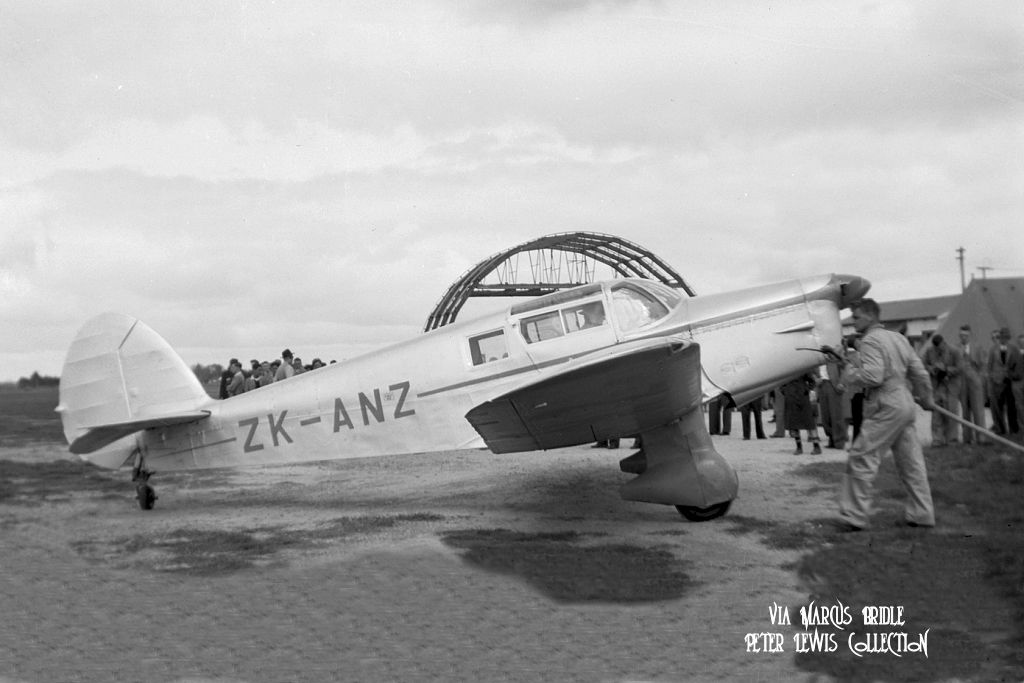 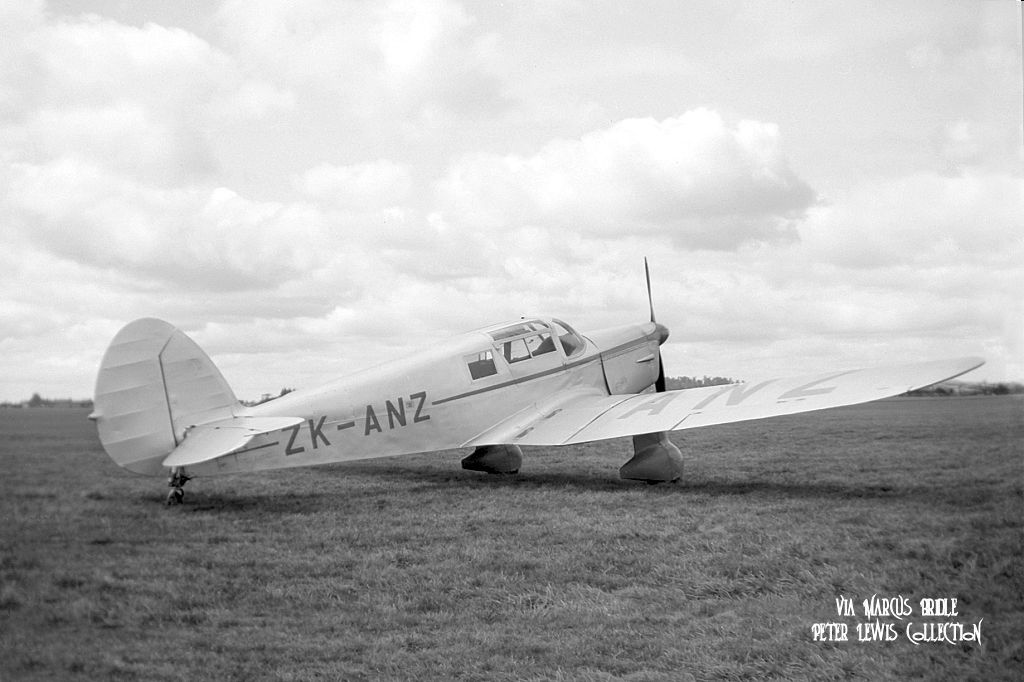 Paraparaumu air pageant 23Jan1949. Paraparaumu air pageant 23Jan1949.
The RNZAF Harvard NZ1097 immediatly behind the Proctor crashed in the Eyreswell Plantation, Canterbury, 17Apr53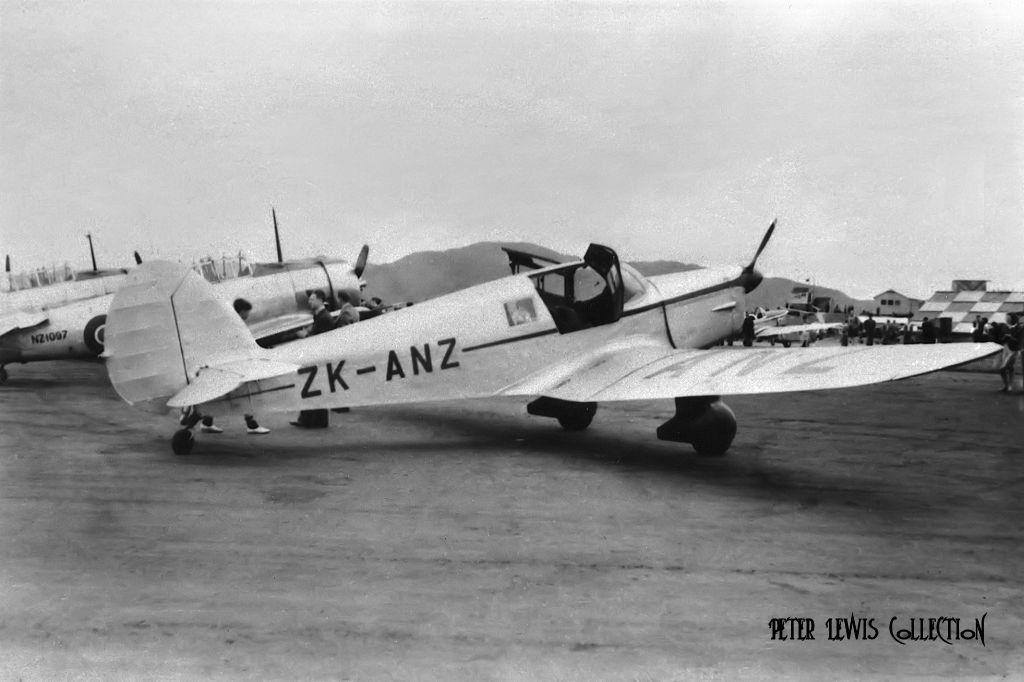 Visiting the Auckland aero club at Mangere 21Oct1949 Visiting the Auckland aero club at Mangere 21Oct1949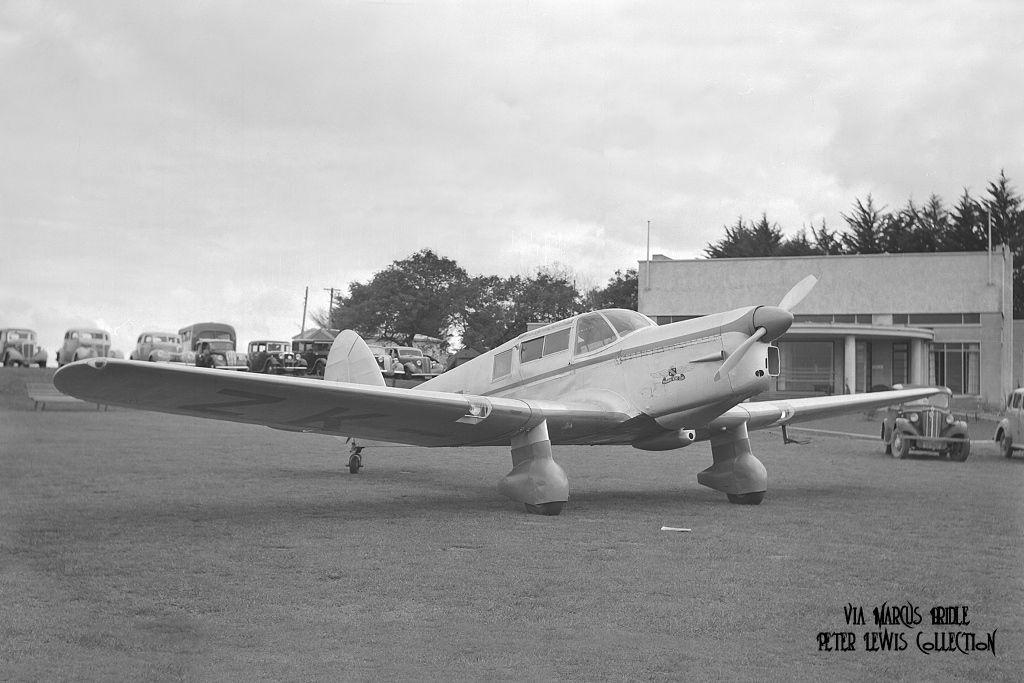  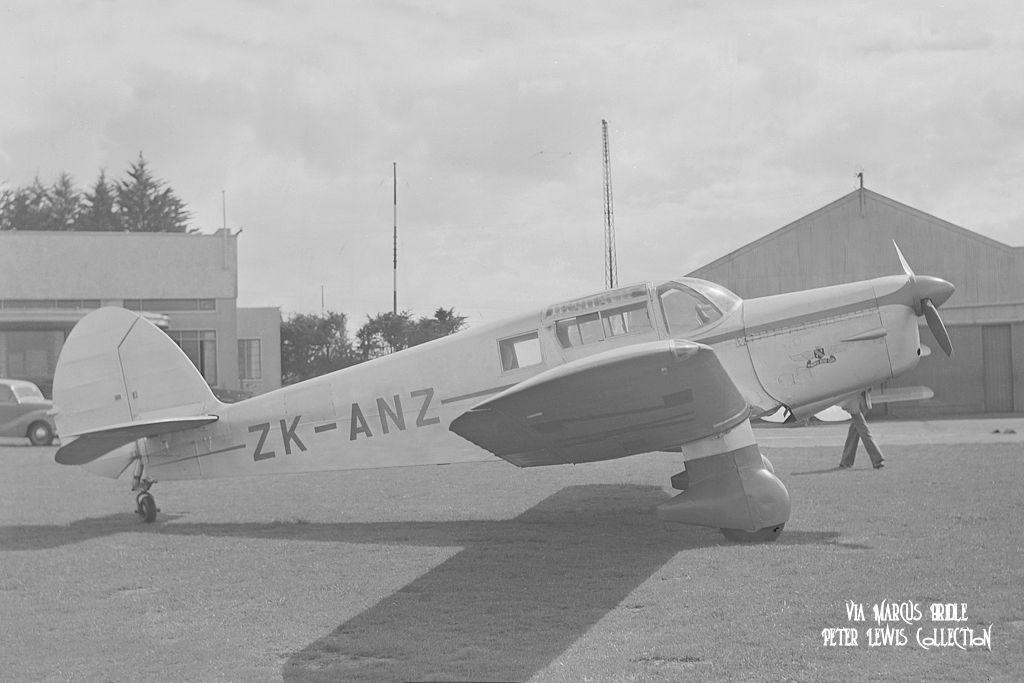 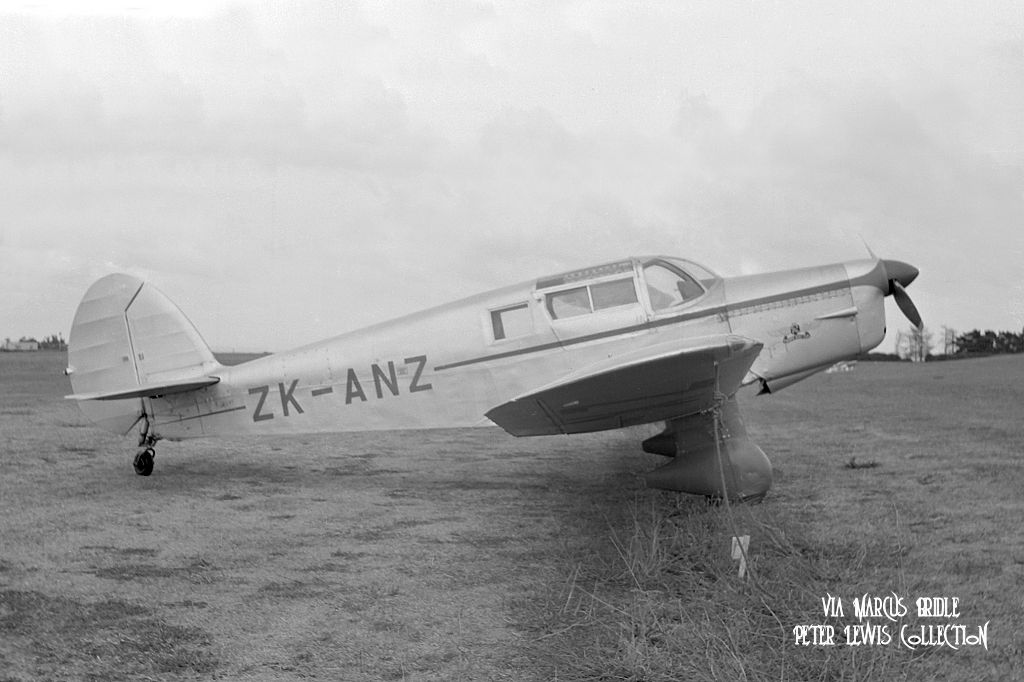 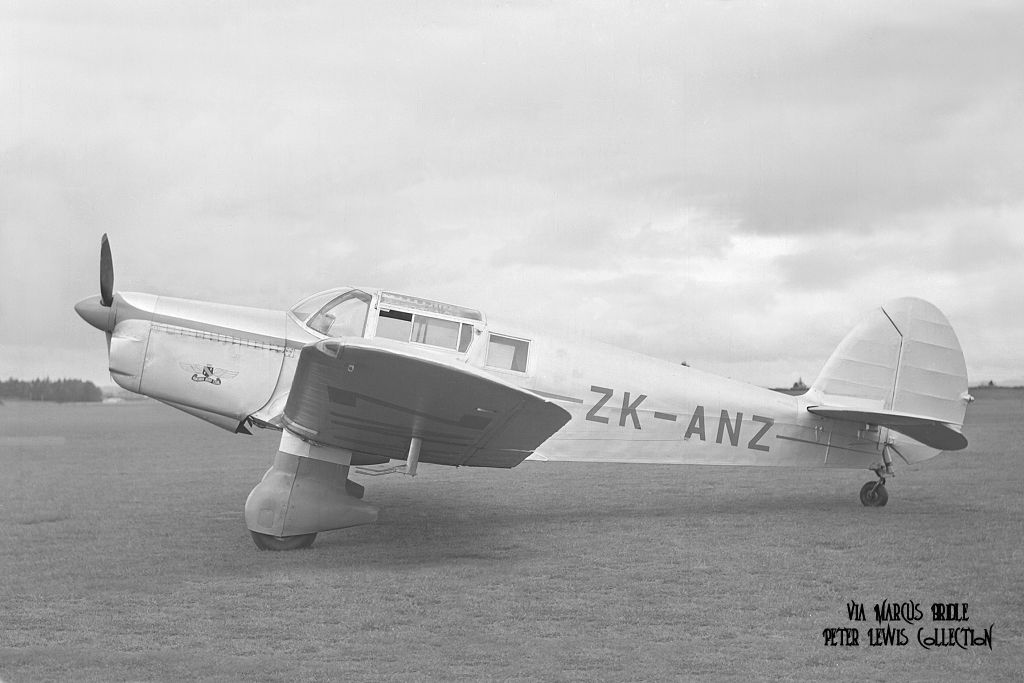 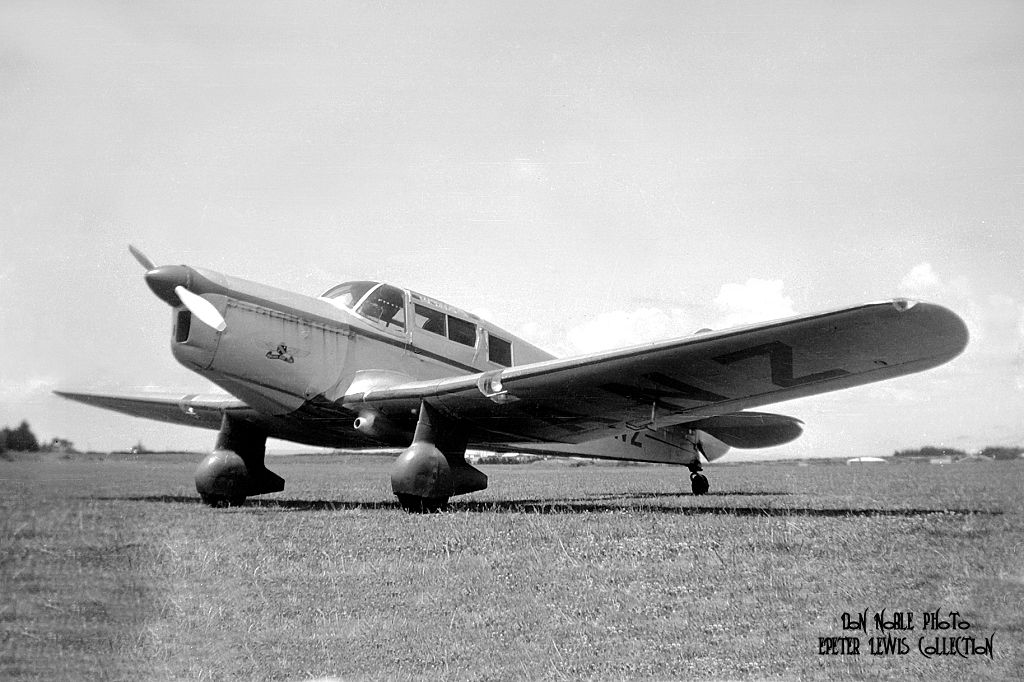  The ex-RNZAF Auckland AC Tiger Moth ZK-AST in the background went into the topdressing industry with Aviation Enterprises Ltd., of Taumarunui, in February 1951. Exported to Australia at the end of 1956, it became VH-BPX The ex-RNZAF Auckland AC Tiger Moth ZK-AST in the background went into the topdressing industry with Aviation Enterprises Ltd., of Taumarunui, in February 1951. Exported to Australia at the end of 1956, it became VH-BPX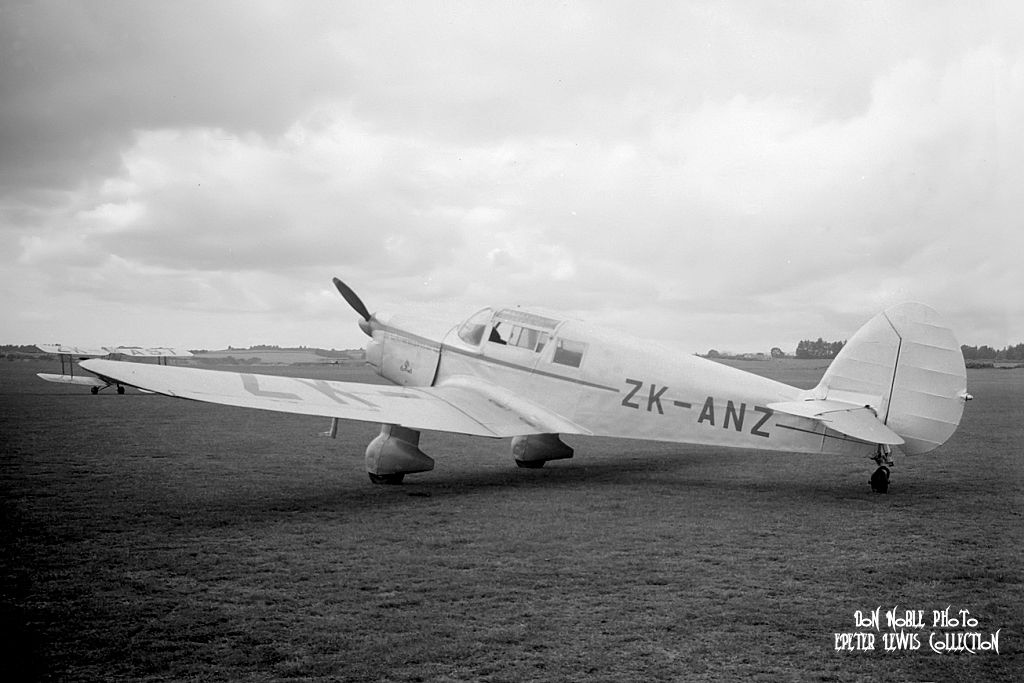 Yes, that is Tiger ZK-AIA in the background. Still with us. Yes, that is Tiger ZK-AIA in the background. Still with us.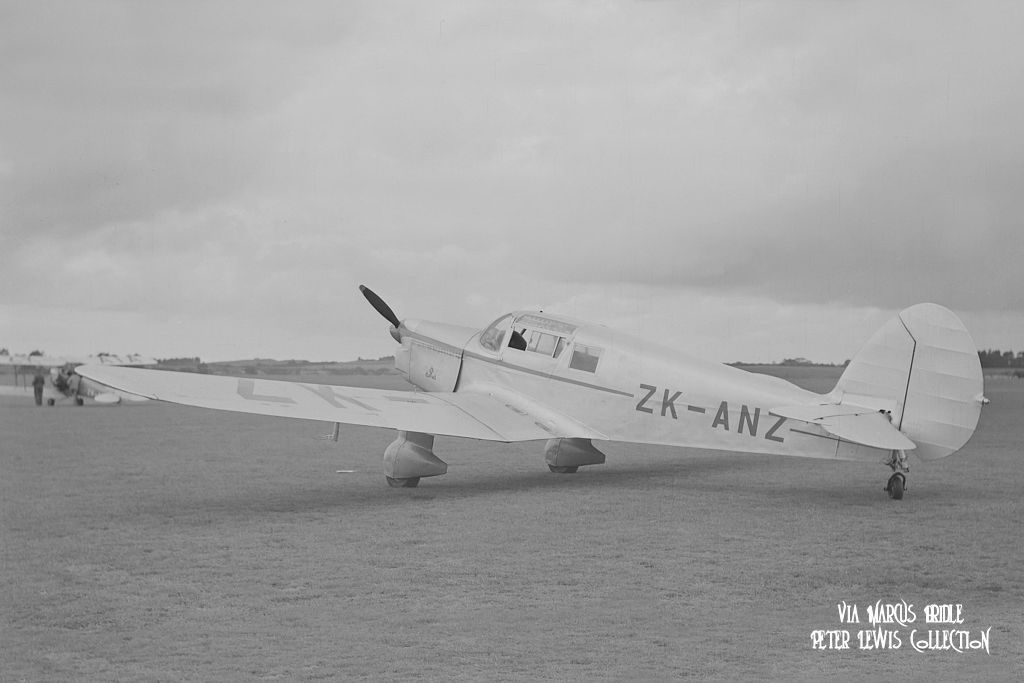 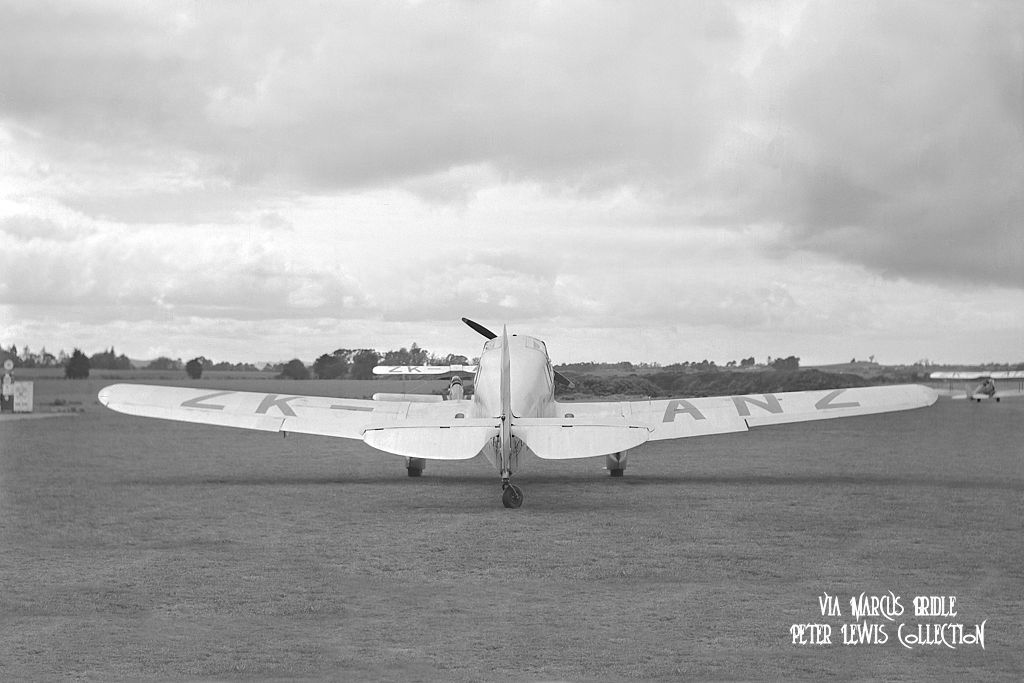  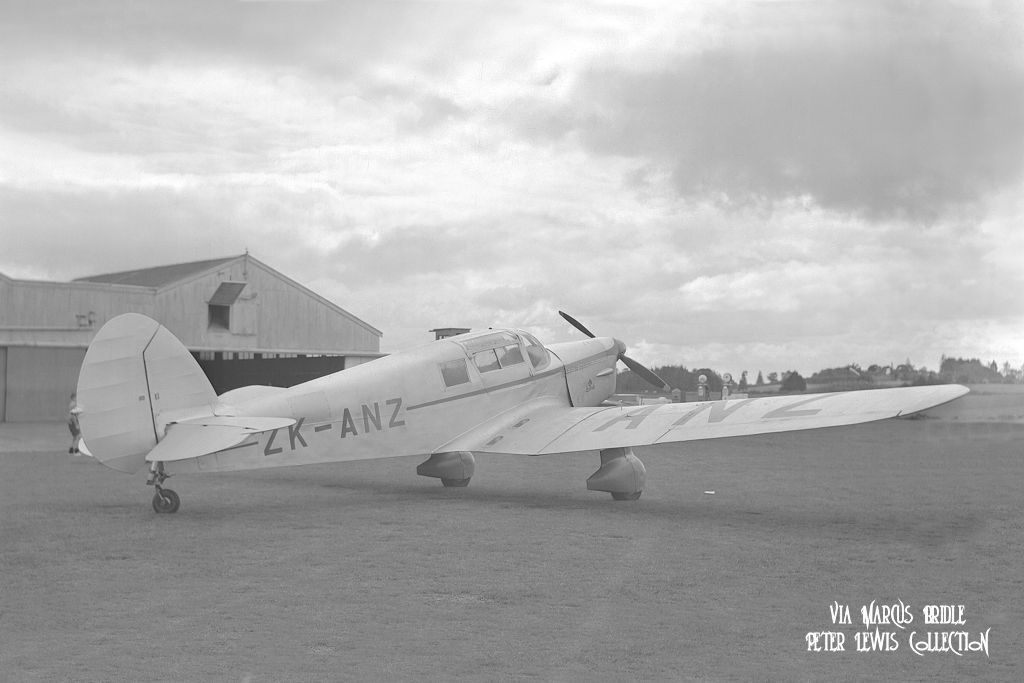 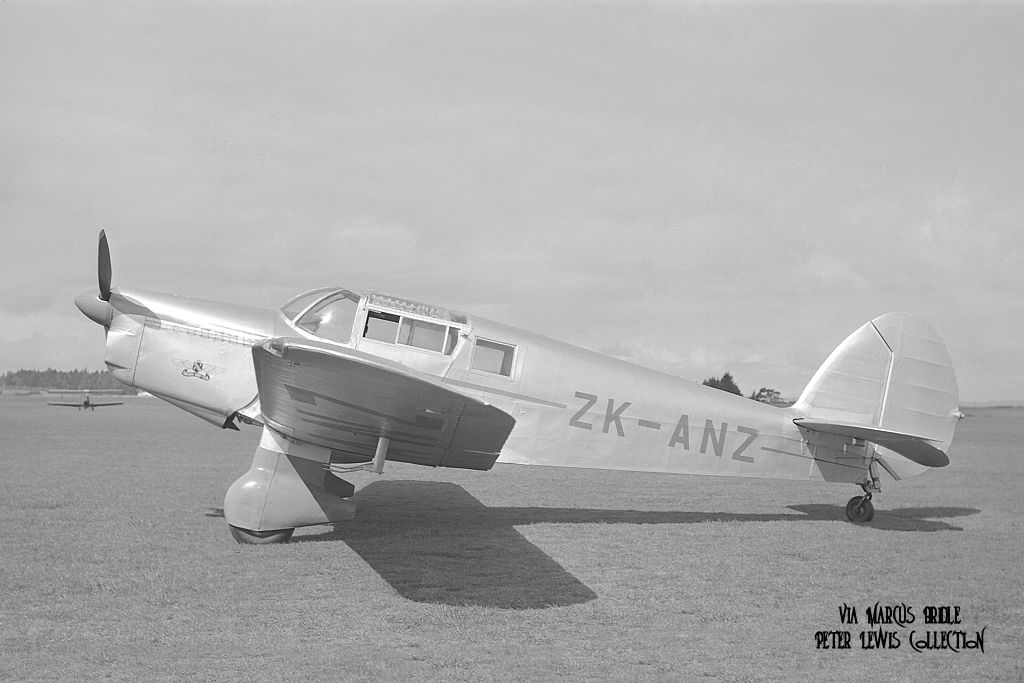 Demonstration of Proctor wing folding. I'm picking that DH60G Moth ZK-ADT is the owner of the upright Gipsy in the backgound Demonstration of Proctor wing folding. I'm picking that DH60G Moth ZK-ADT is the owner of the upright Gipsy in the backgound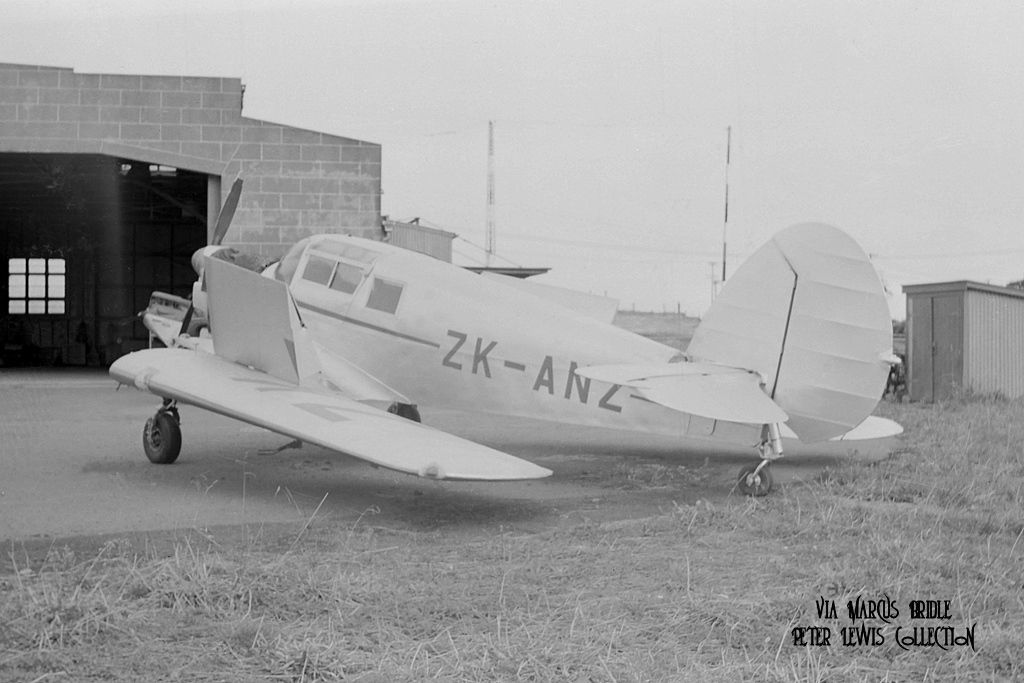 Repainted, with the registration now carried on the tail Repainted, with the registration now carried on the tail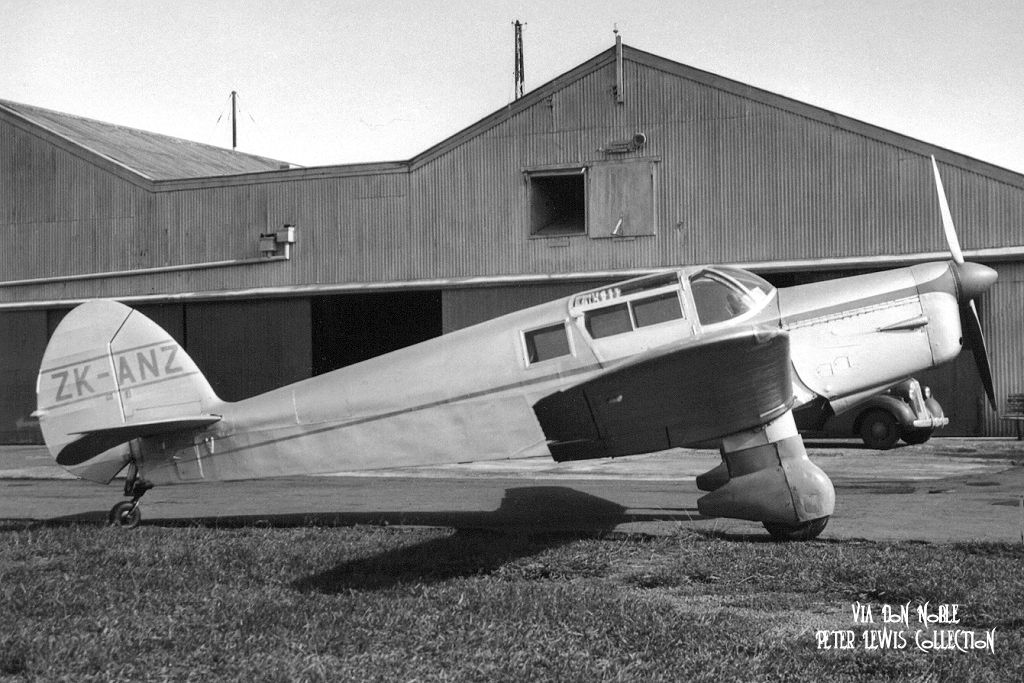 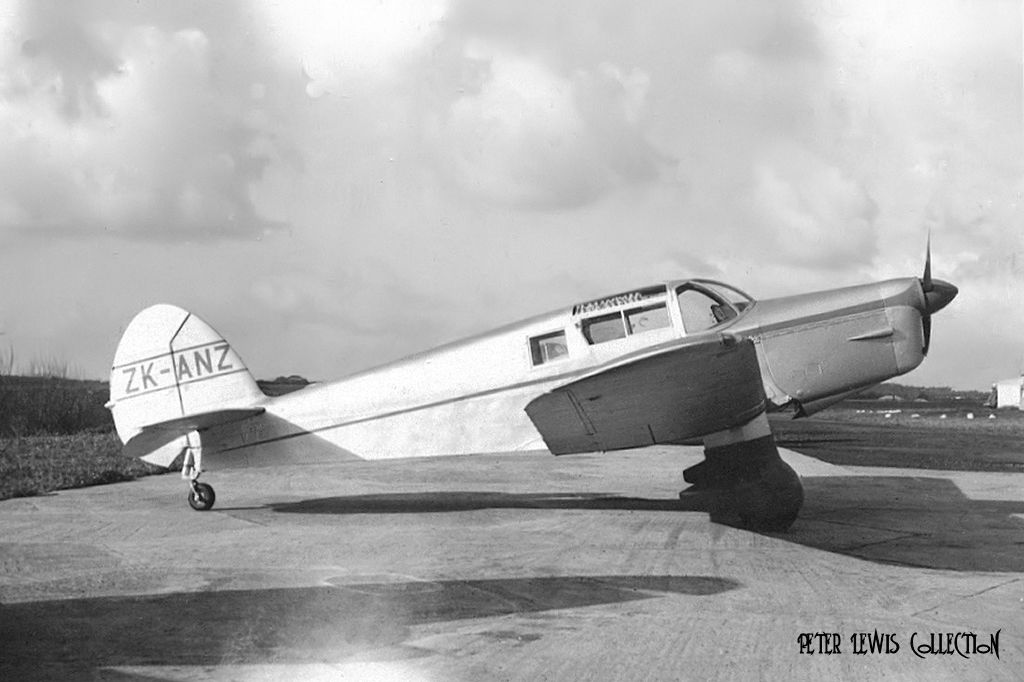 Mangere 8Jul1950 Mangere 8Jul1950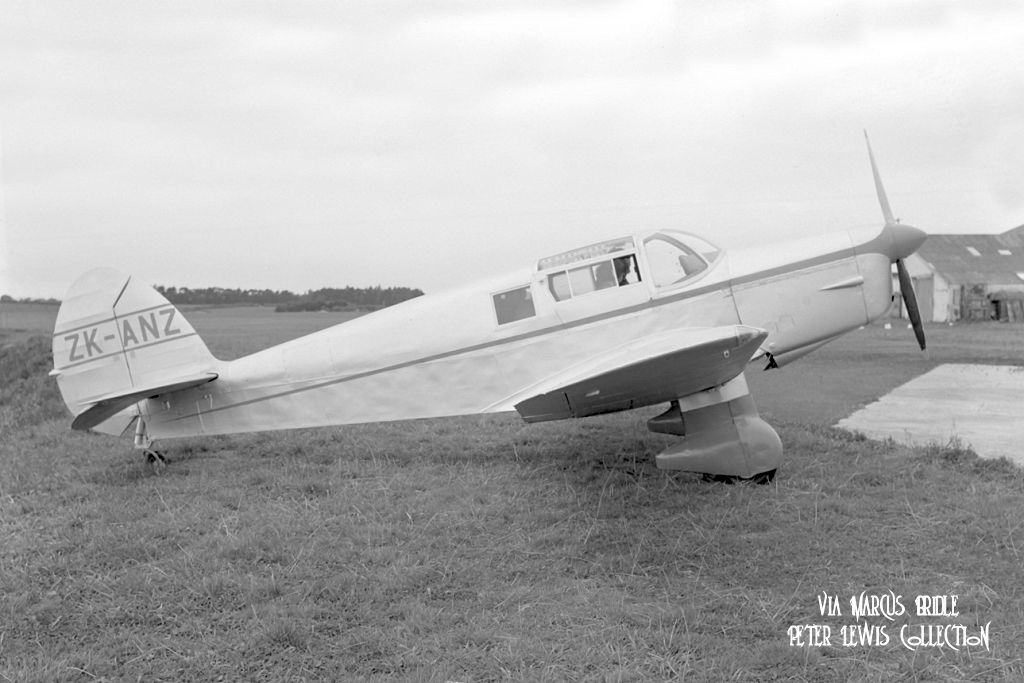 ZK-ANZ visiting Mangere 1952/53, in Kaitaia Aero Club colours ZK-ANZ visiting Mangere 1952/53, in Kaitaia Aero Club colours 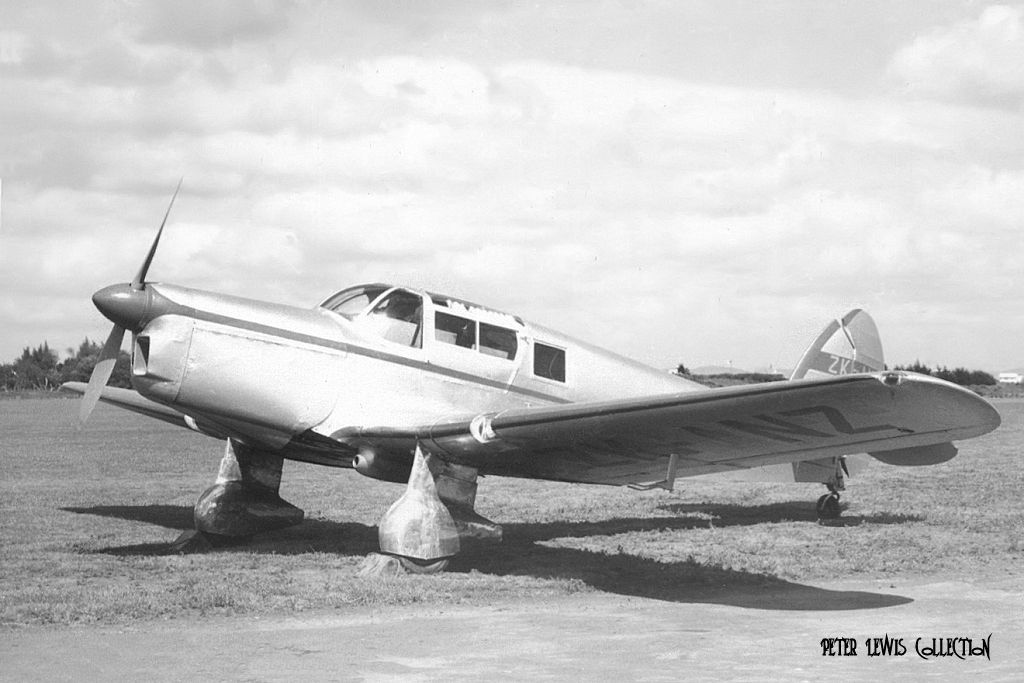 What could well have been the end of ZK-ANZ, pegged out at Mangere What could well have been the end of ZK-ANZ, pegged out at Mangere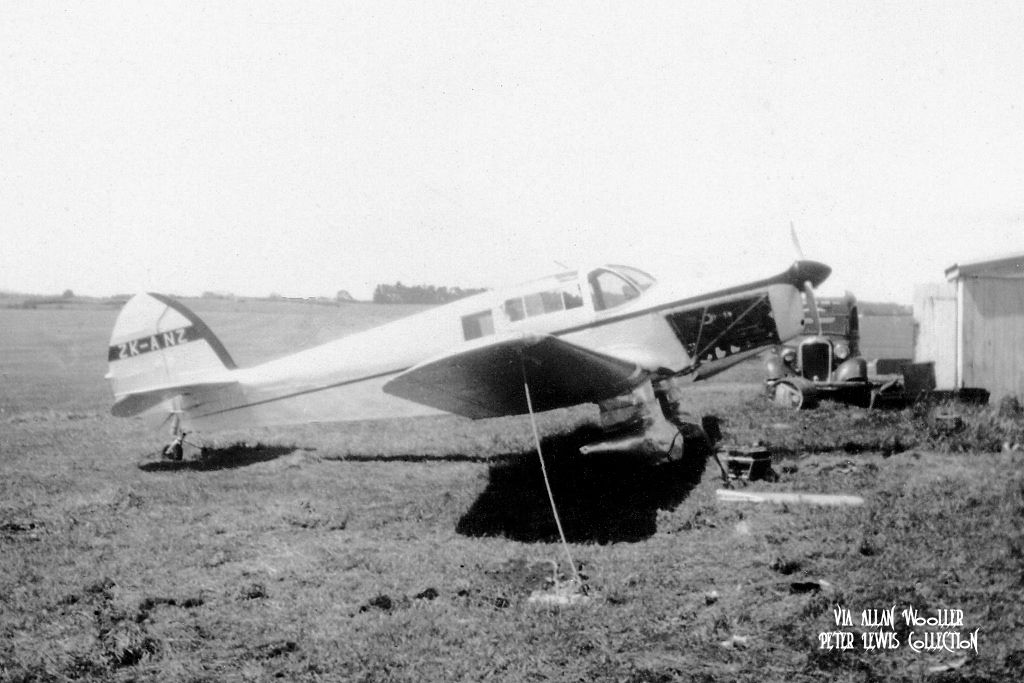 |
|
















